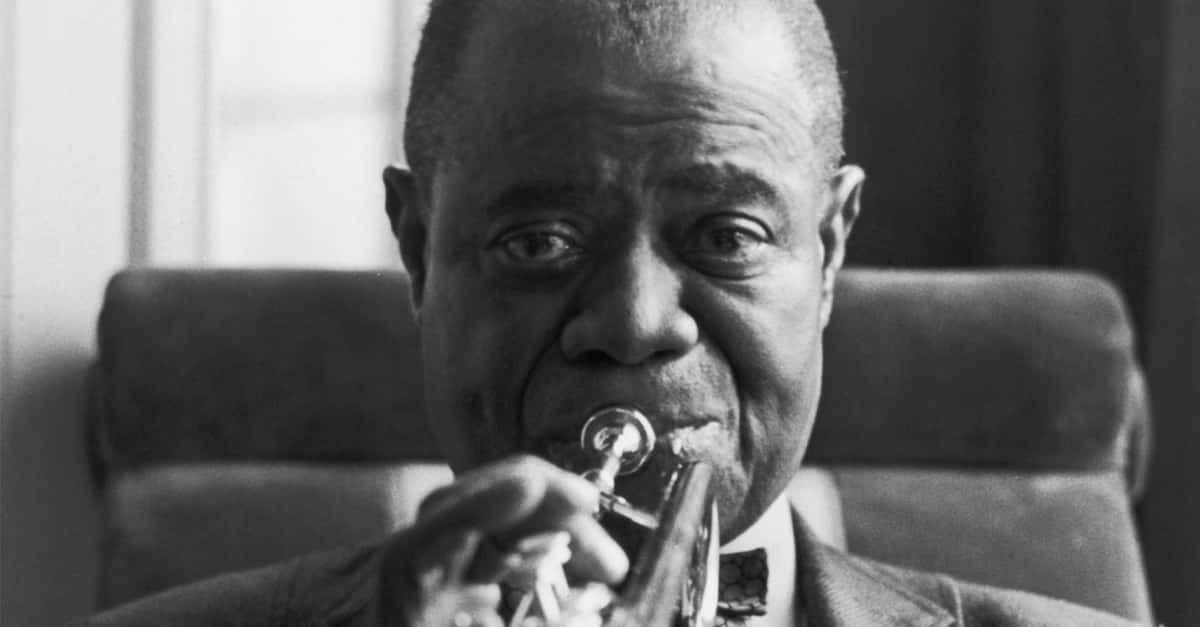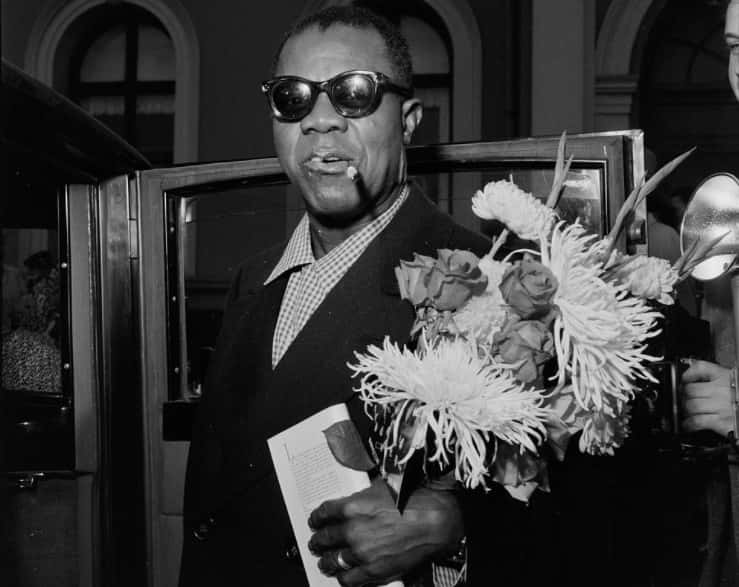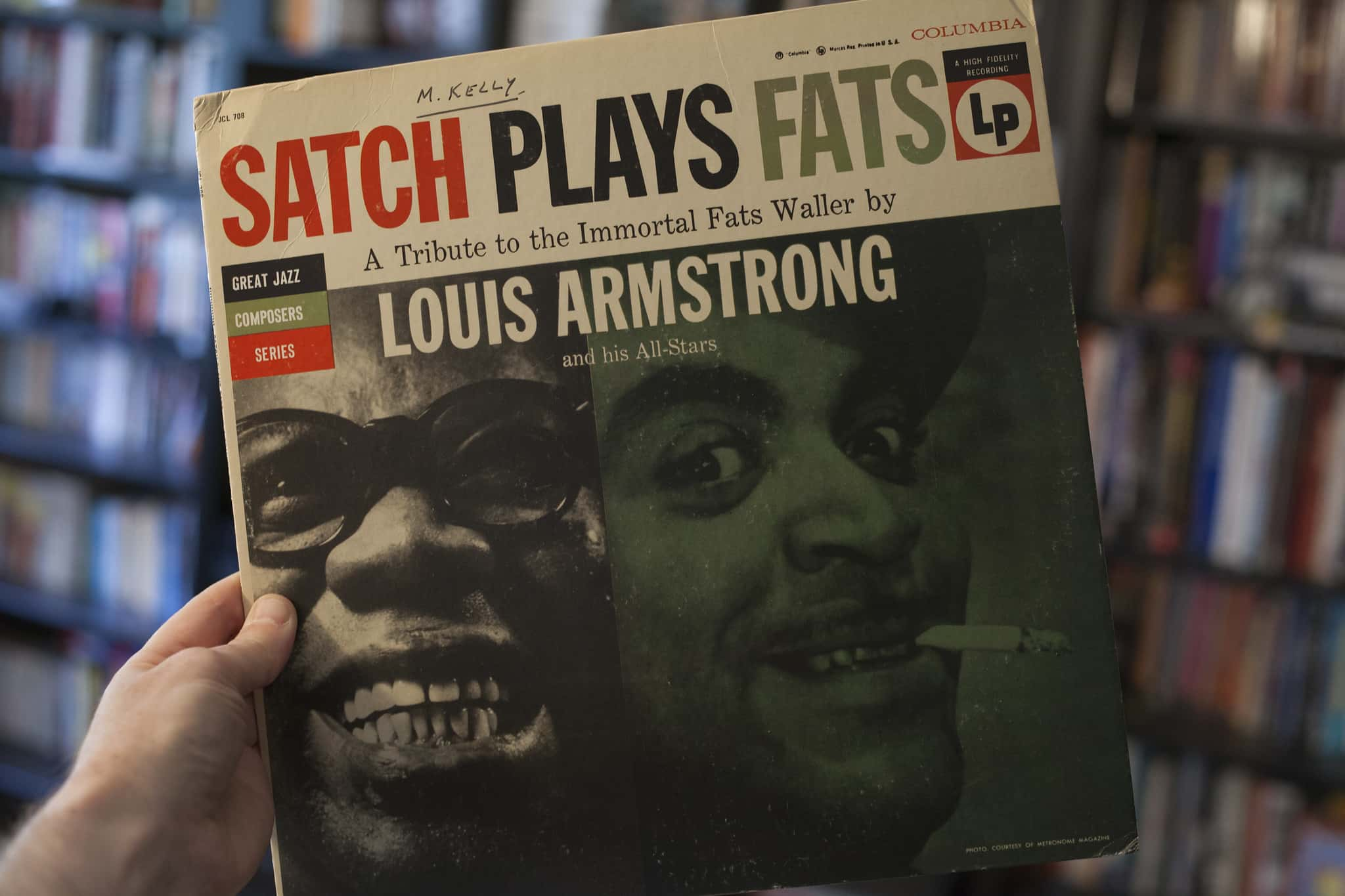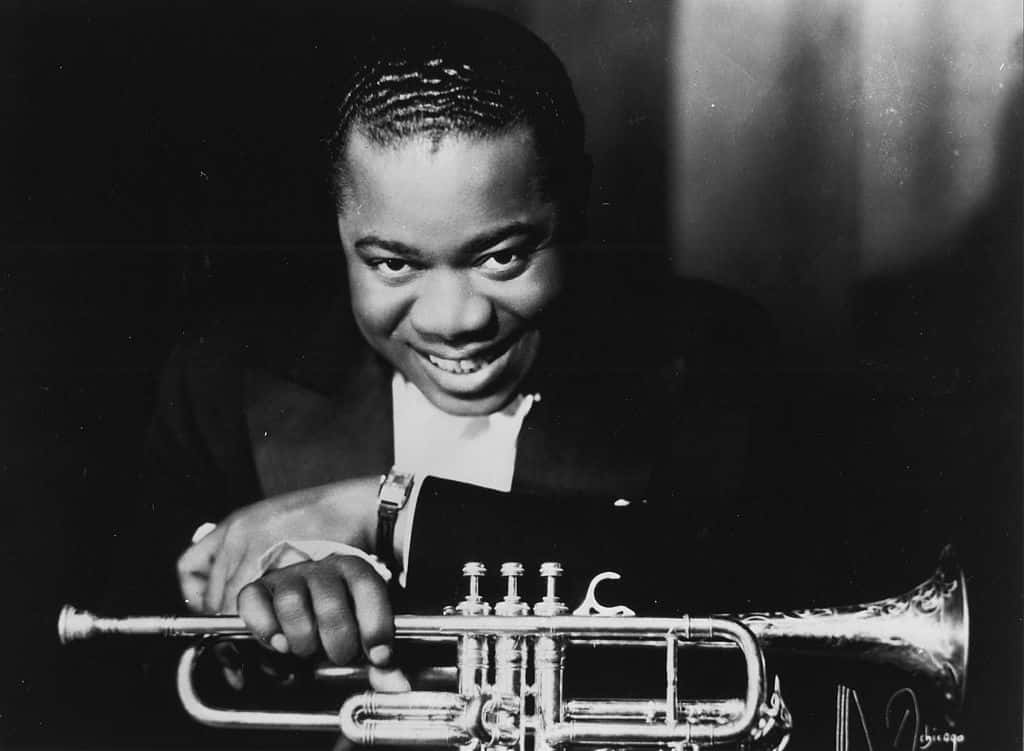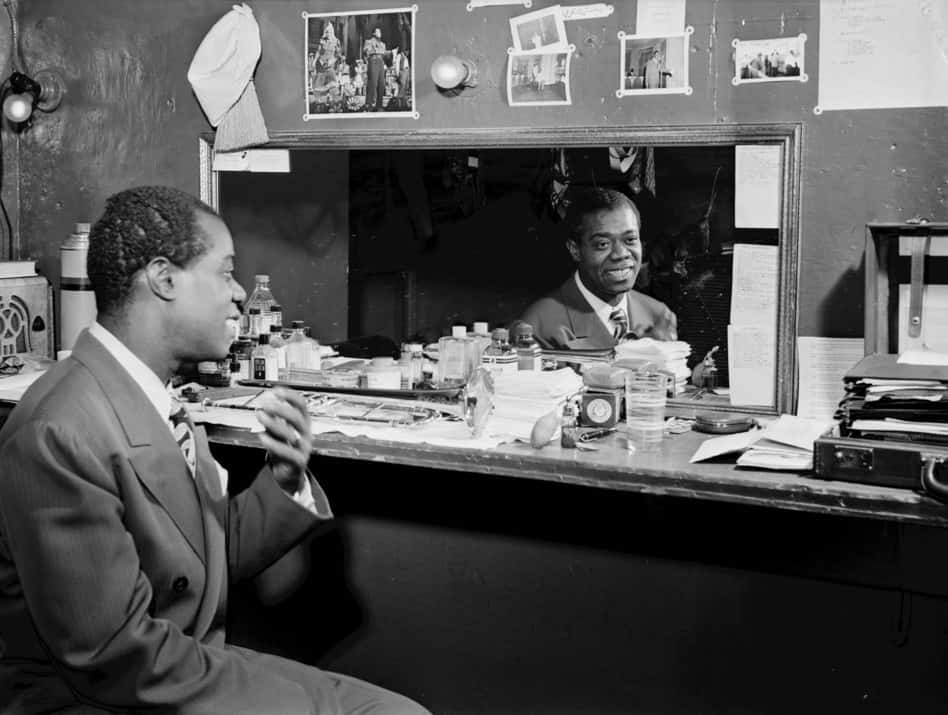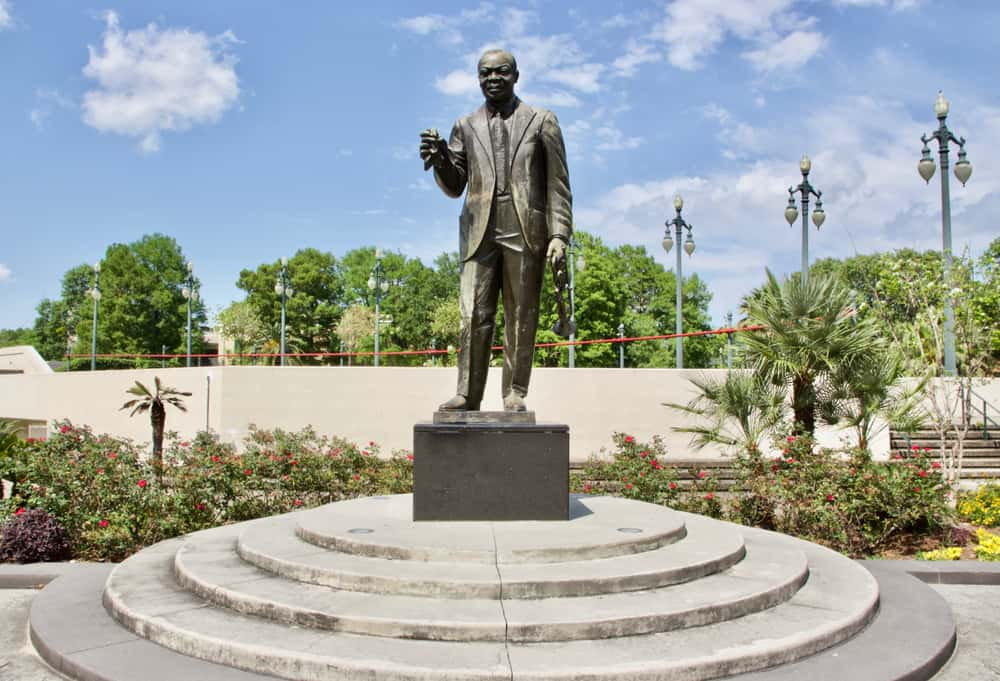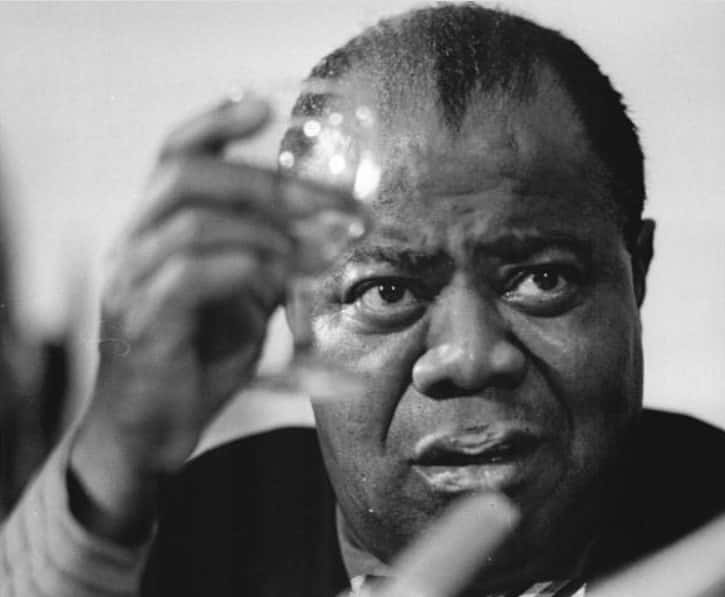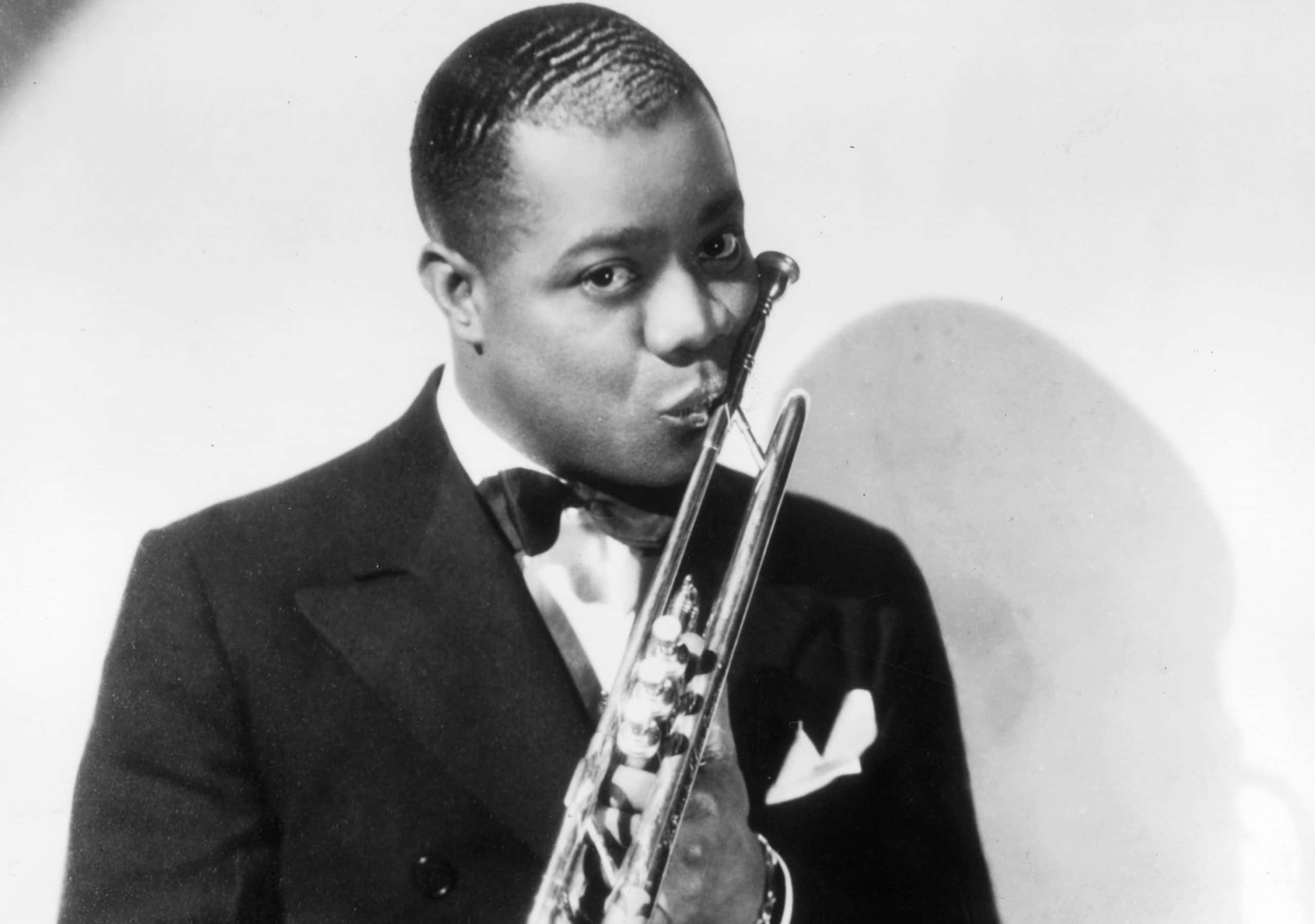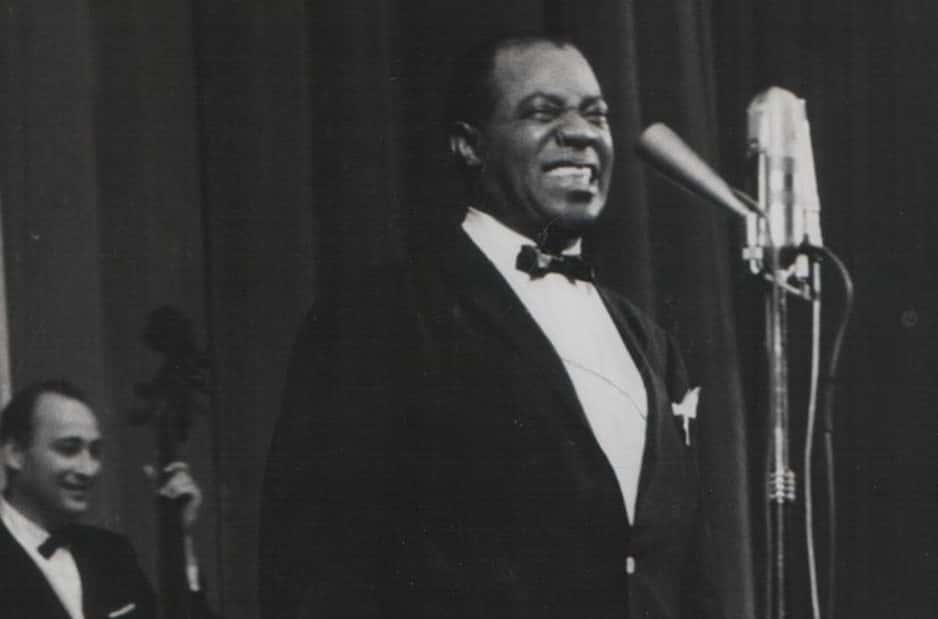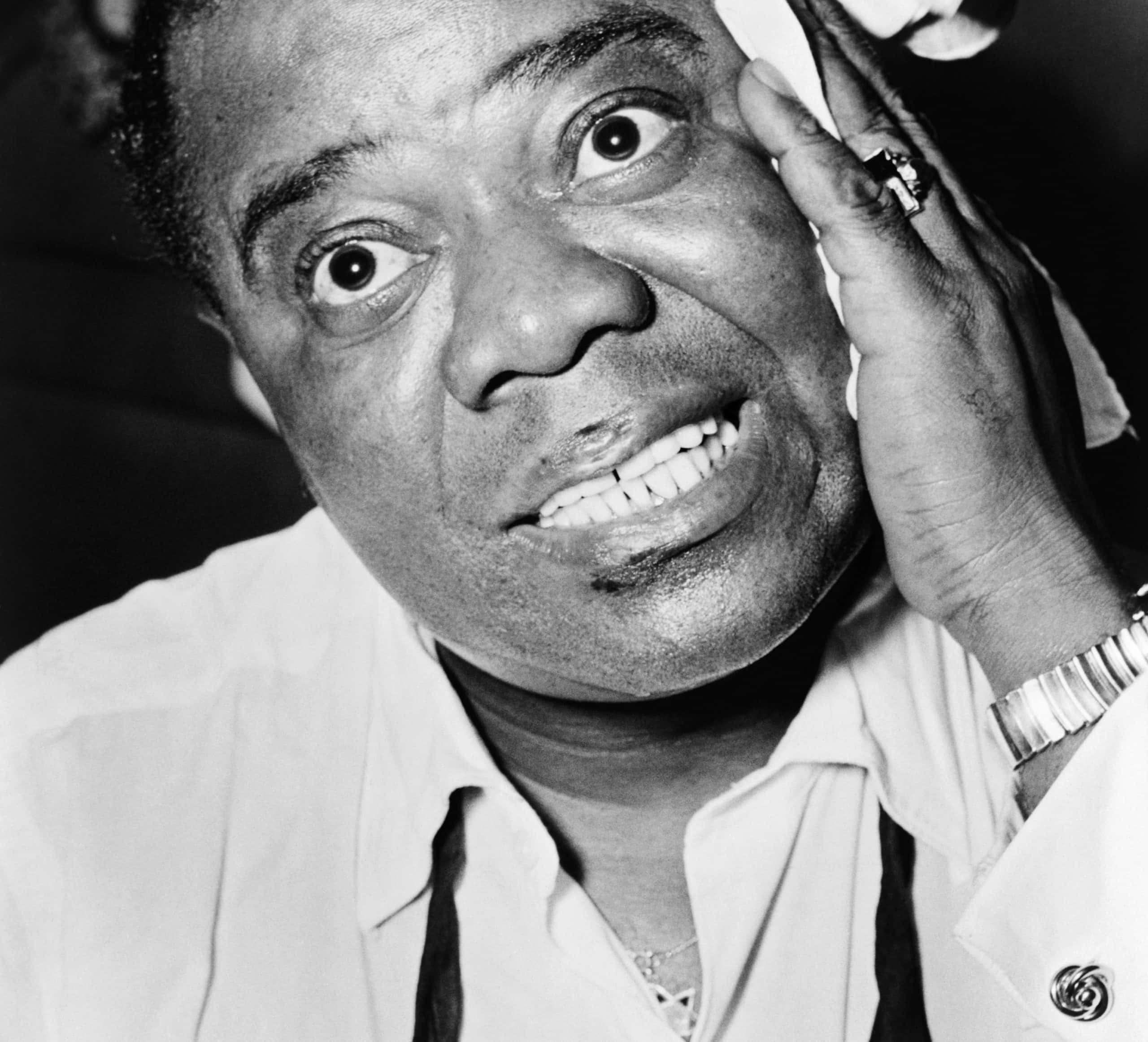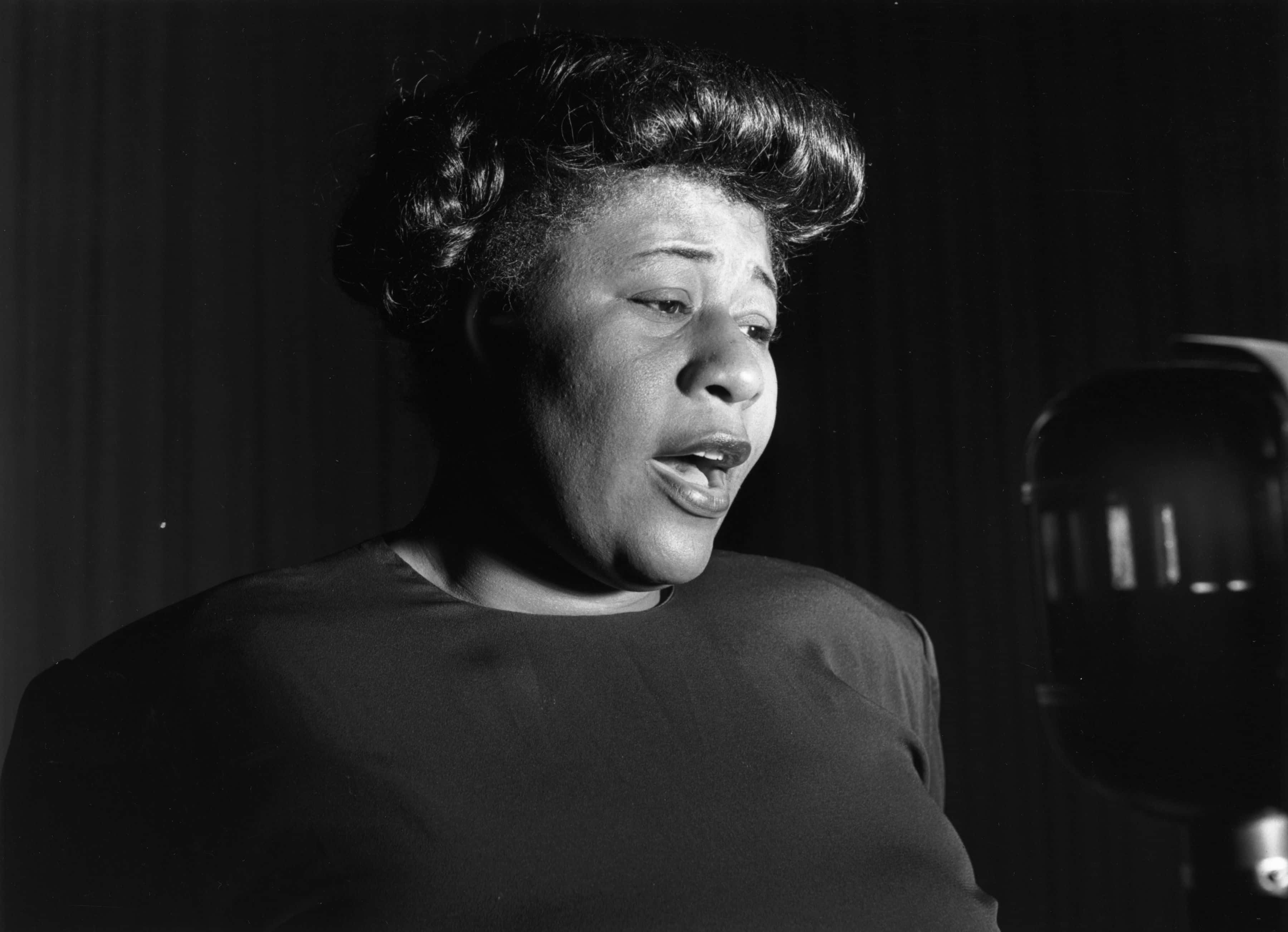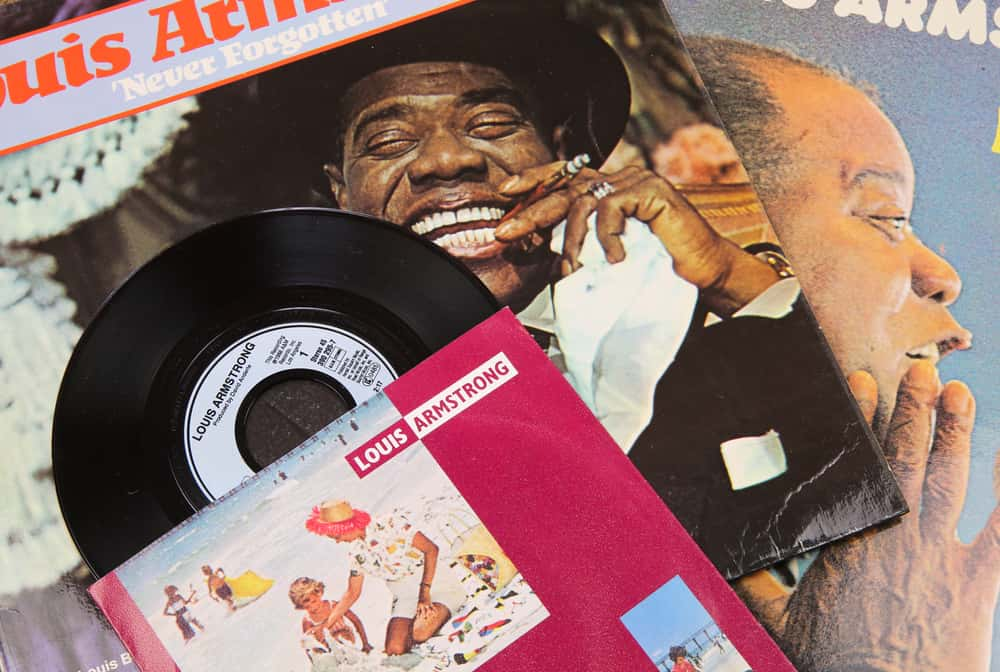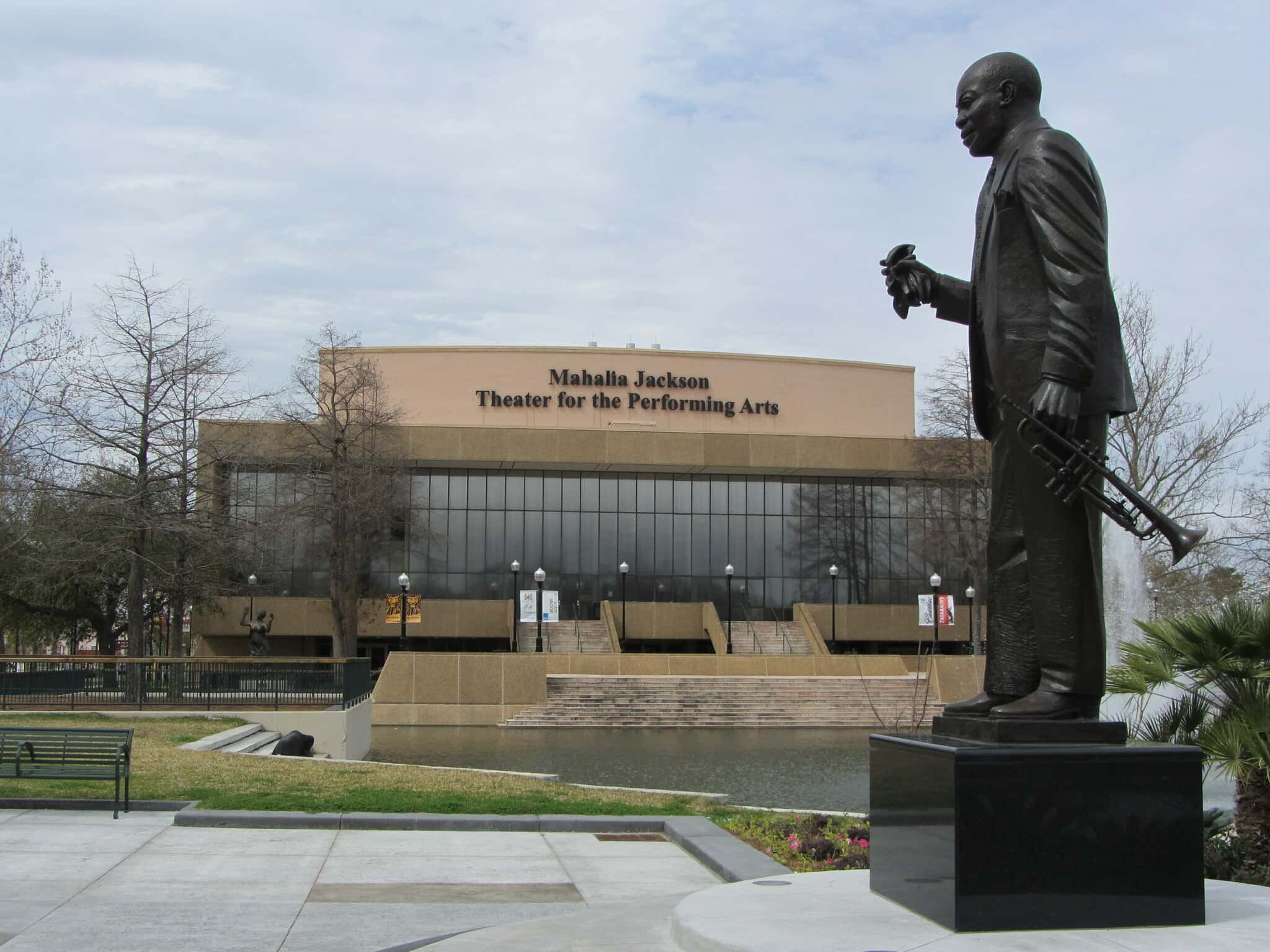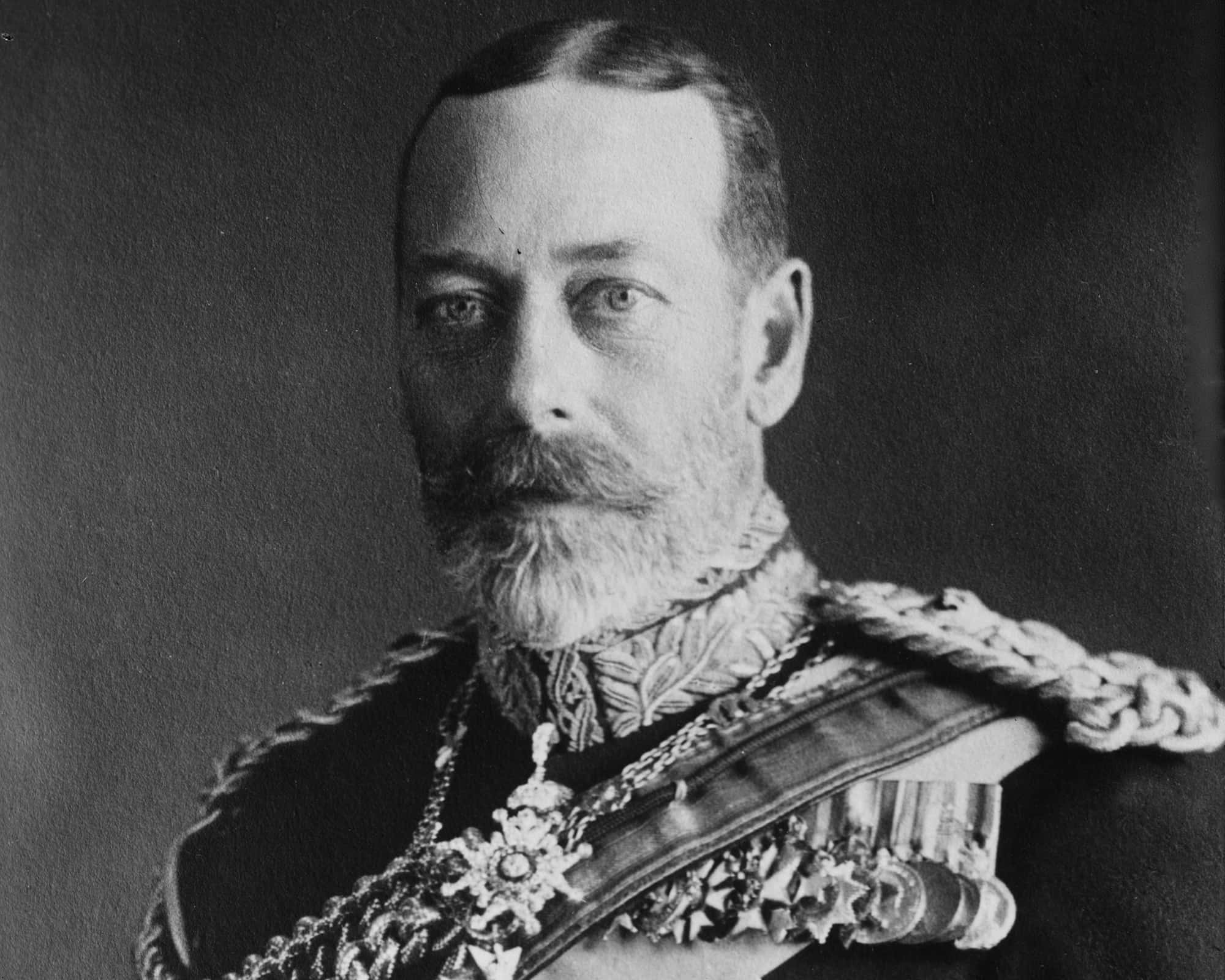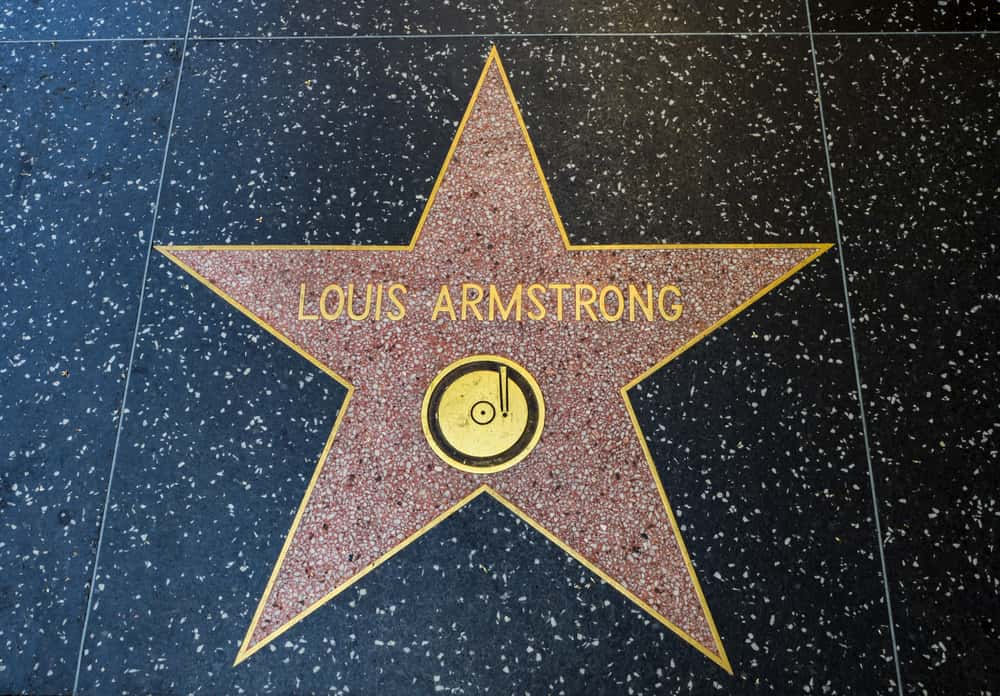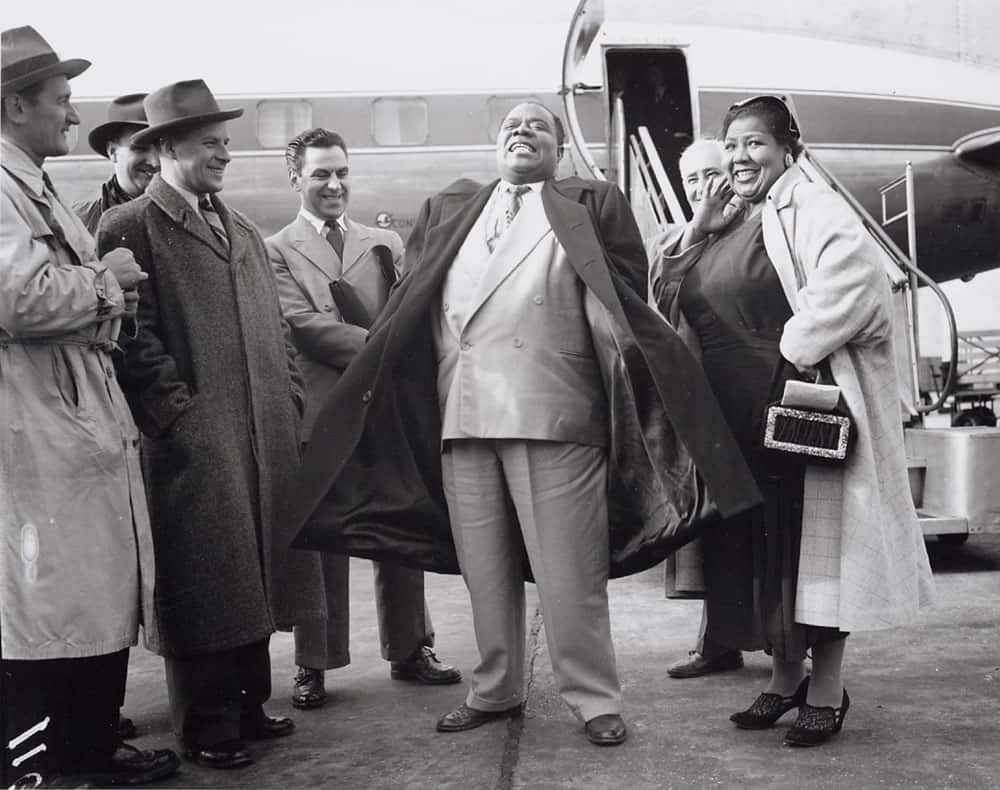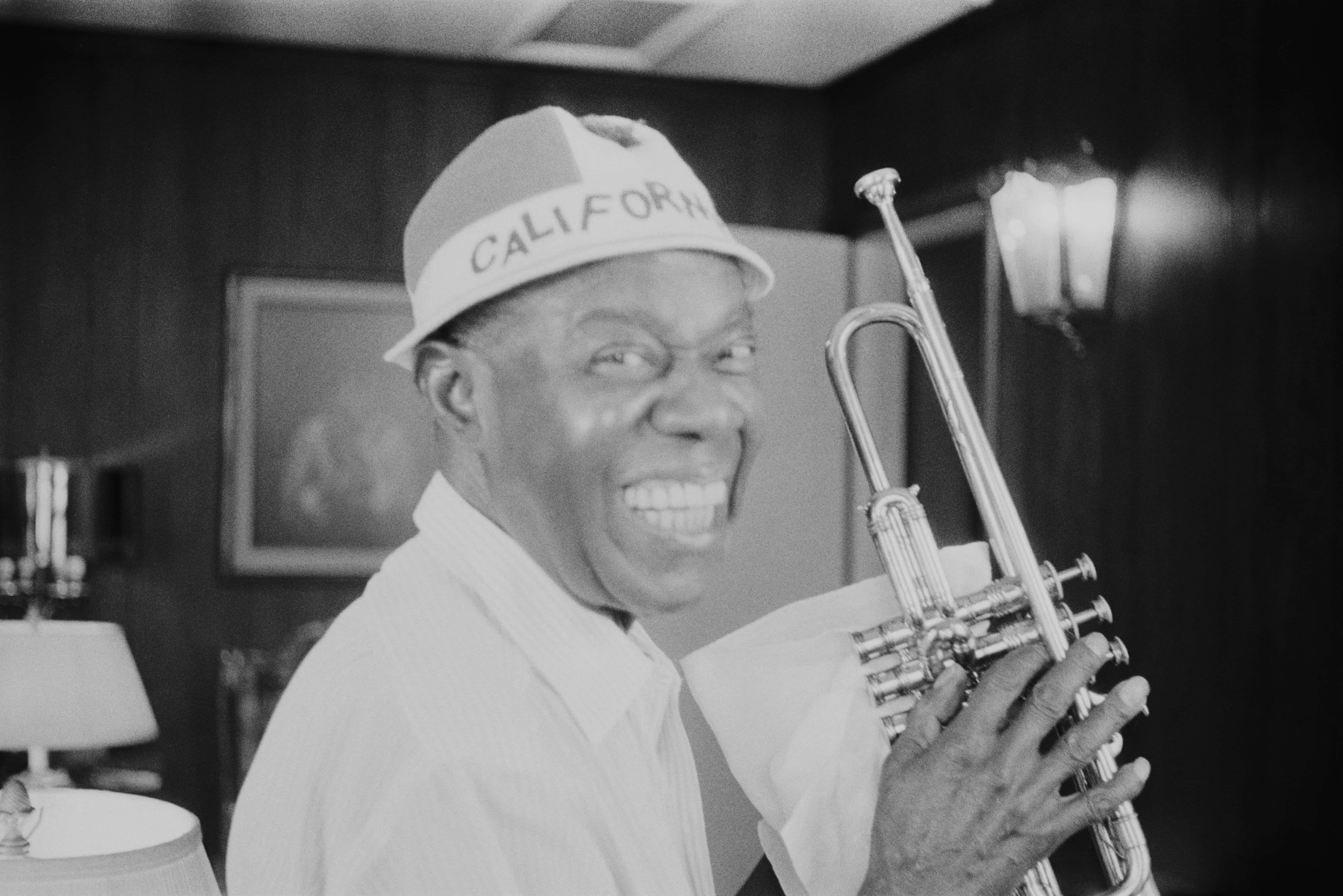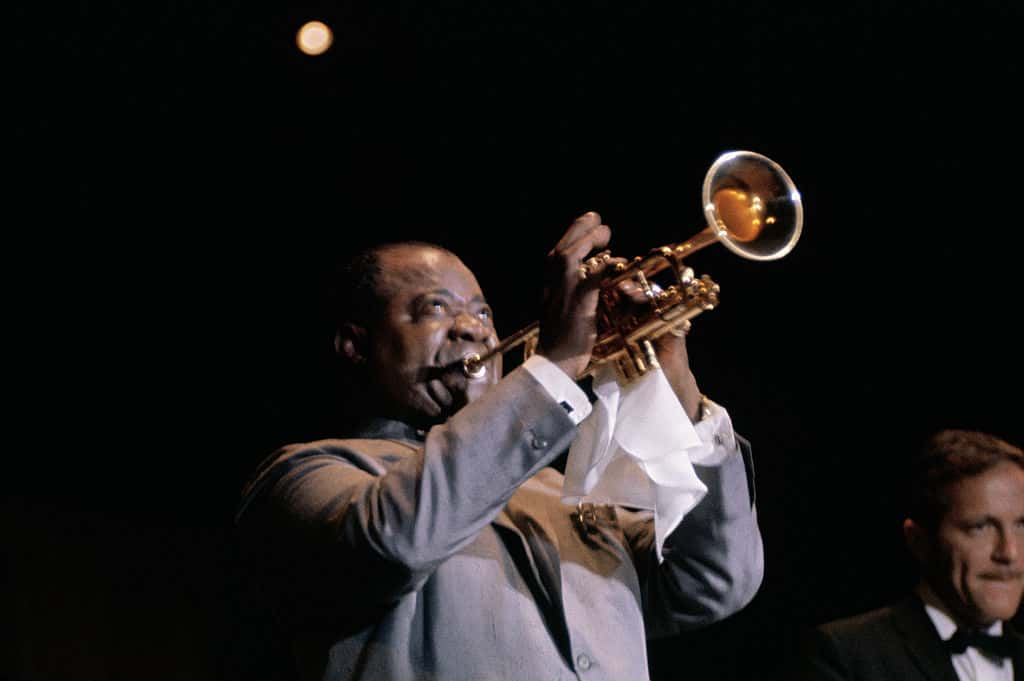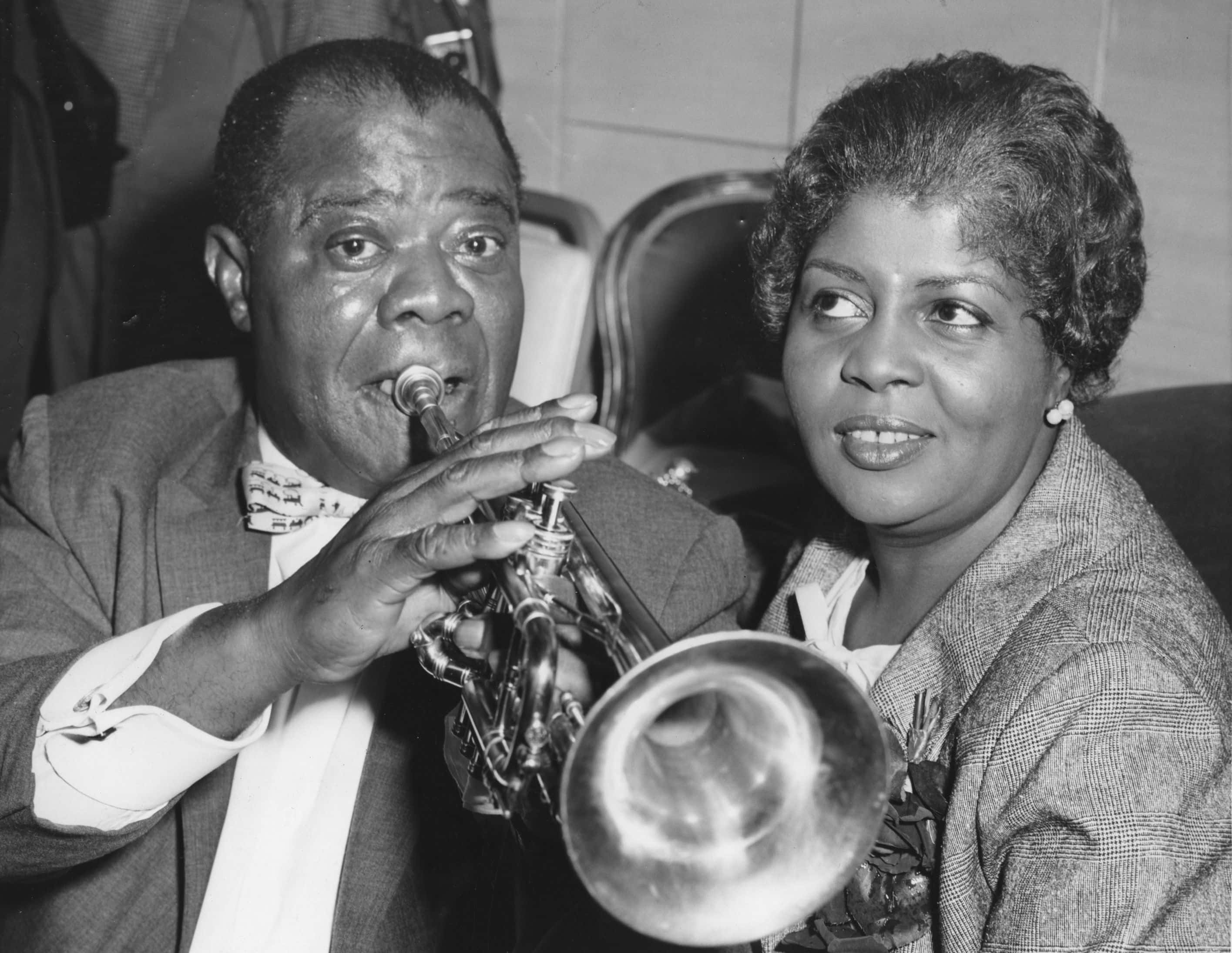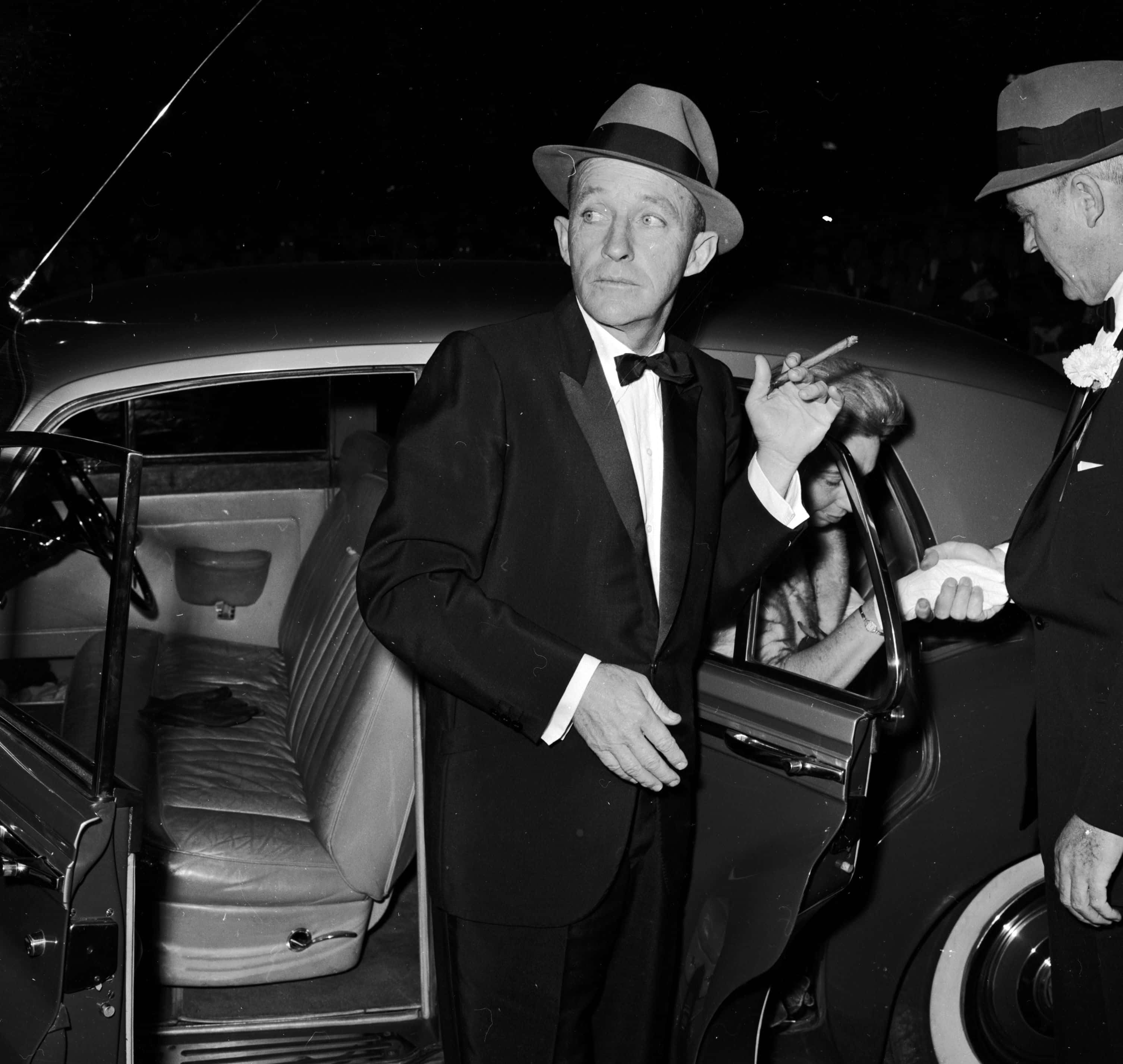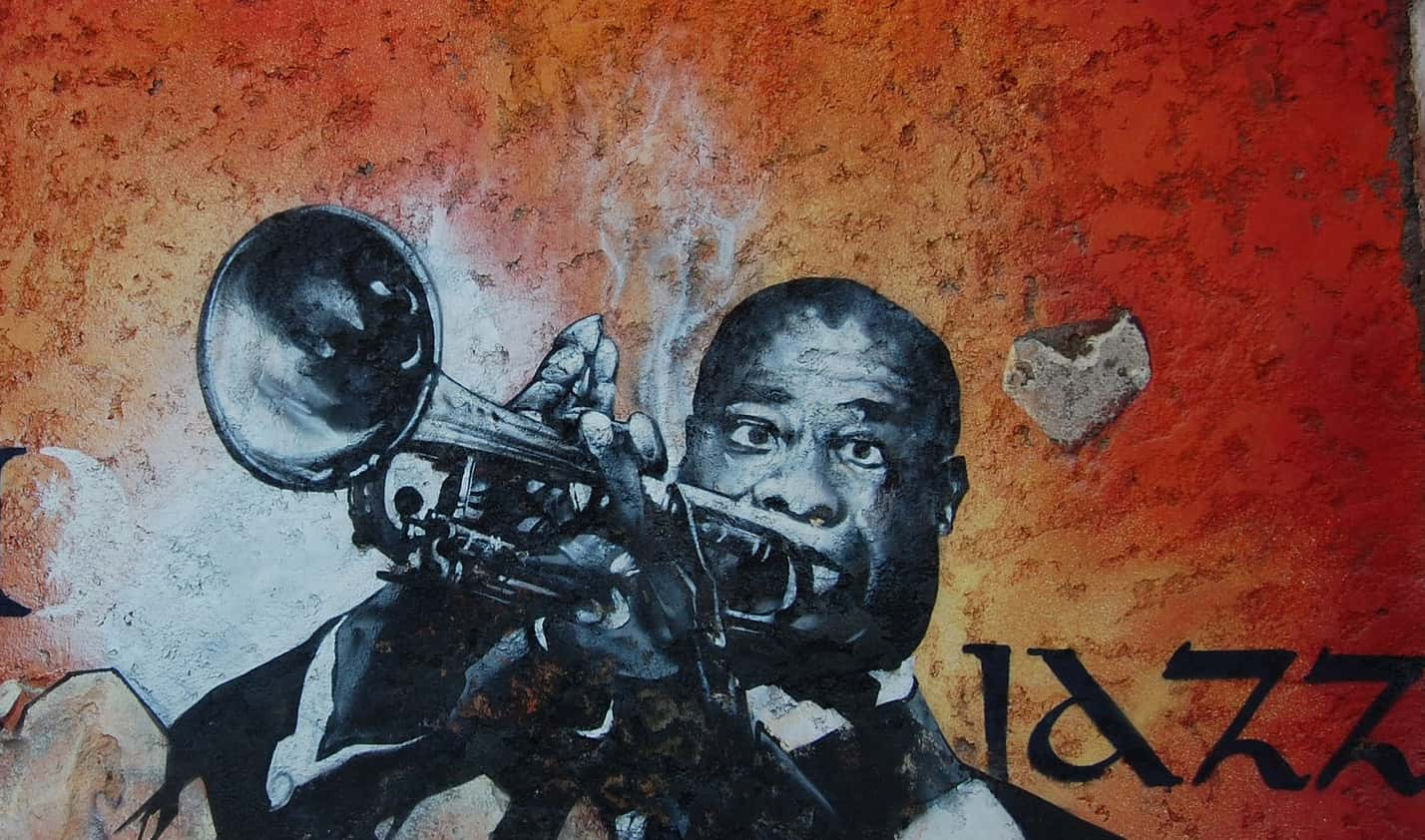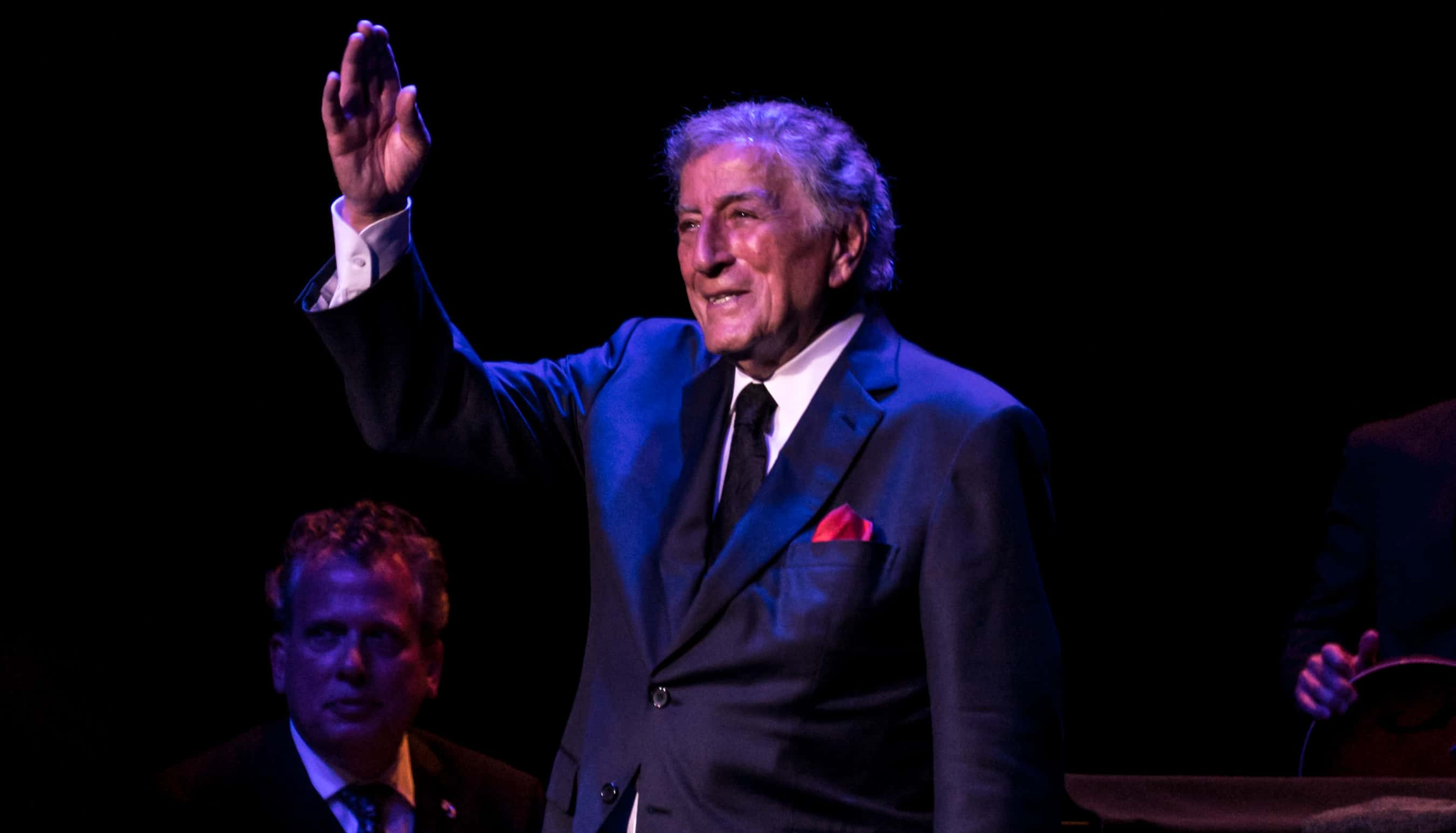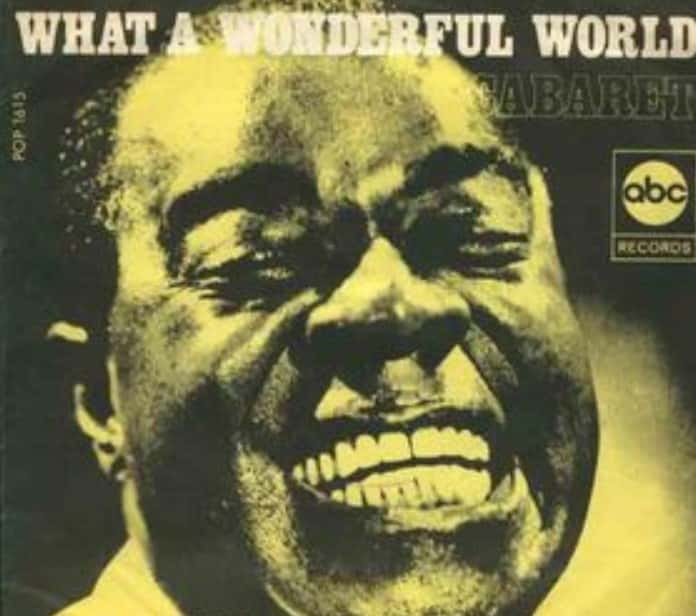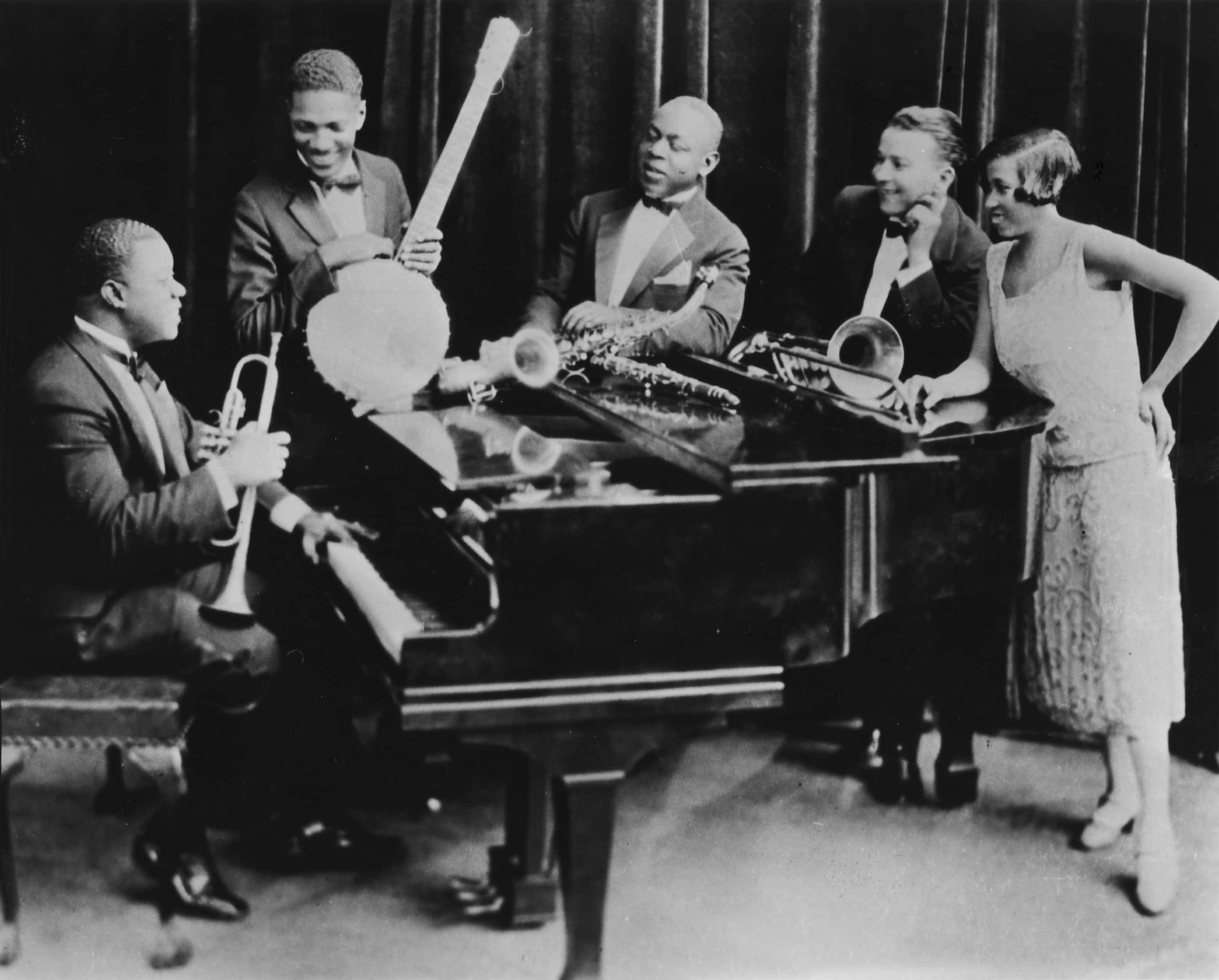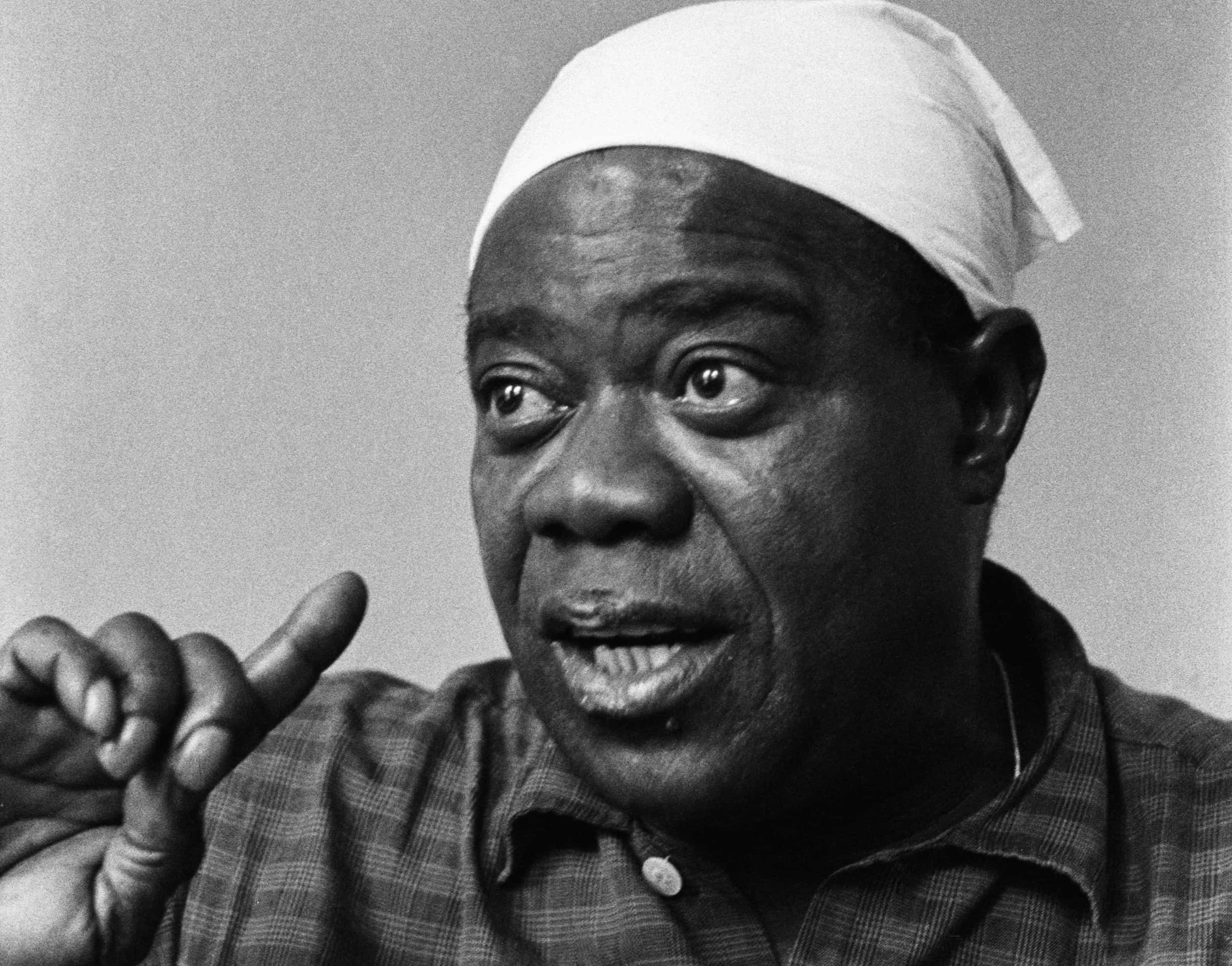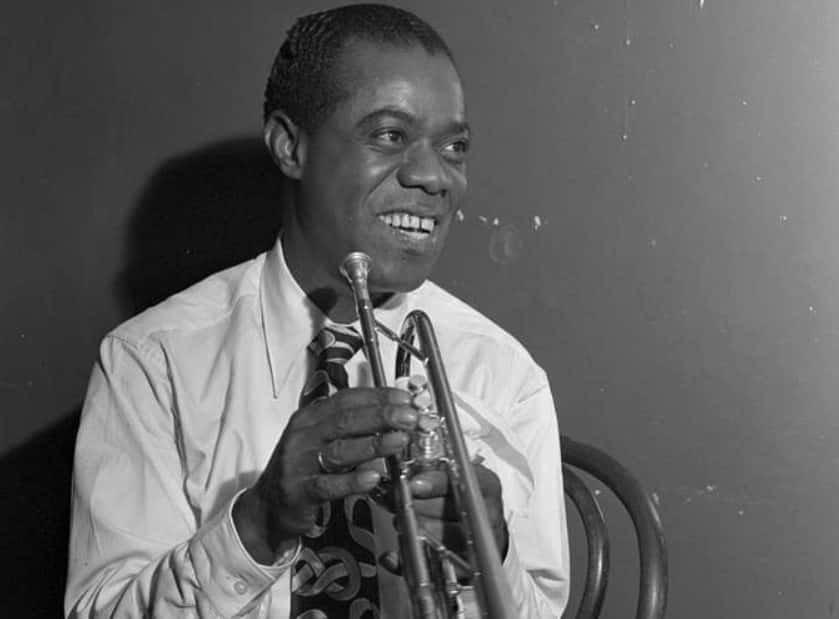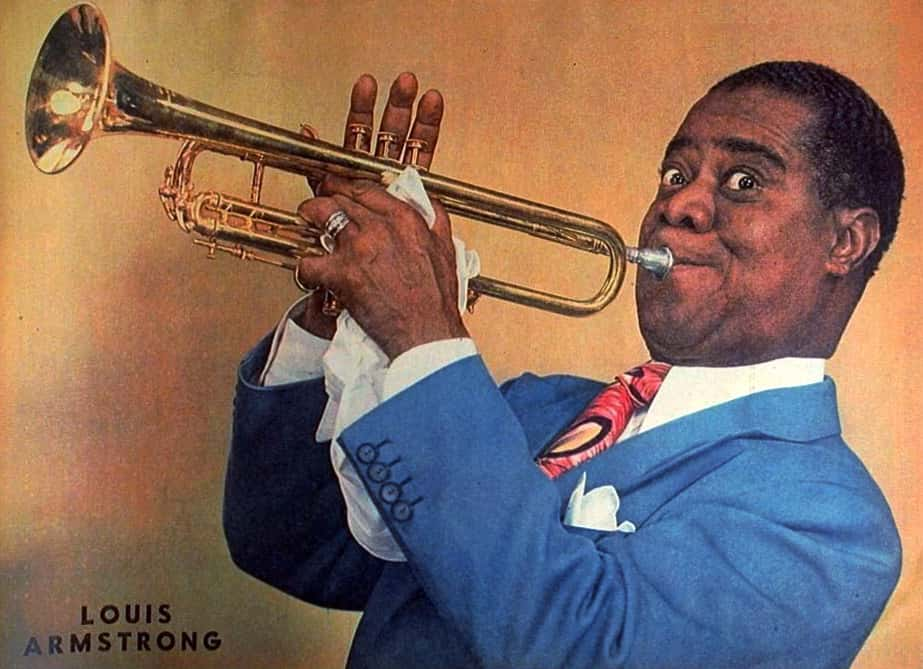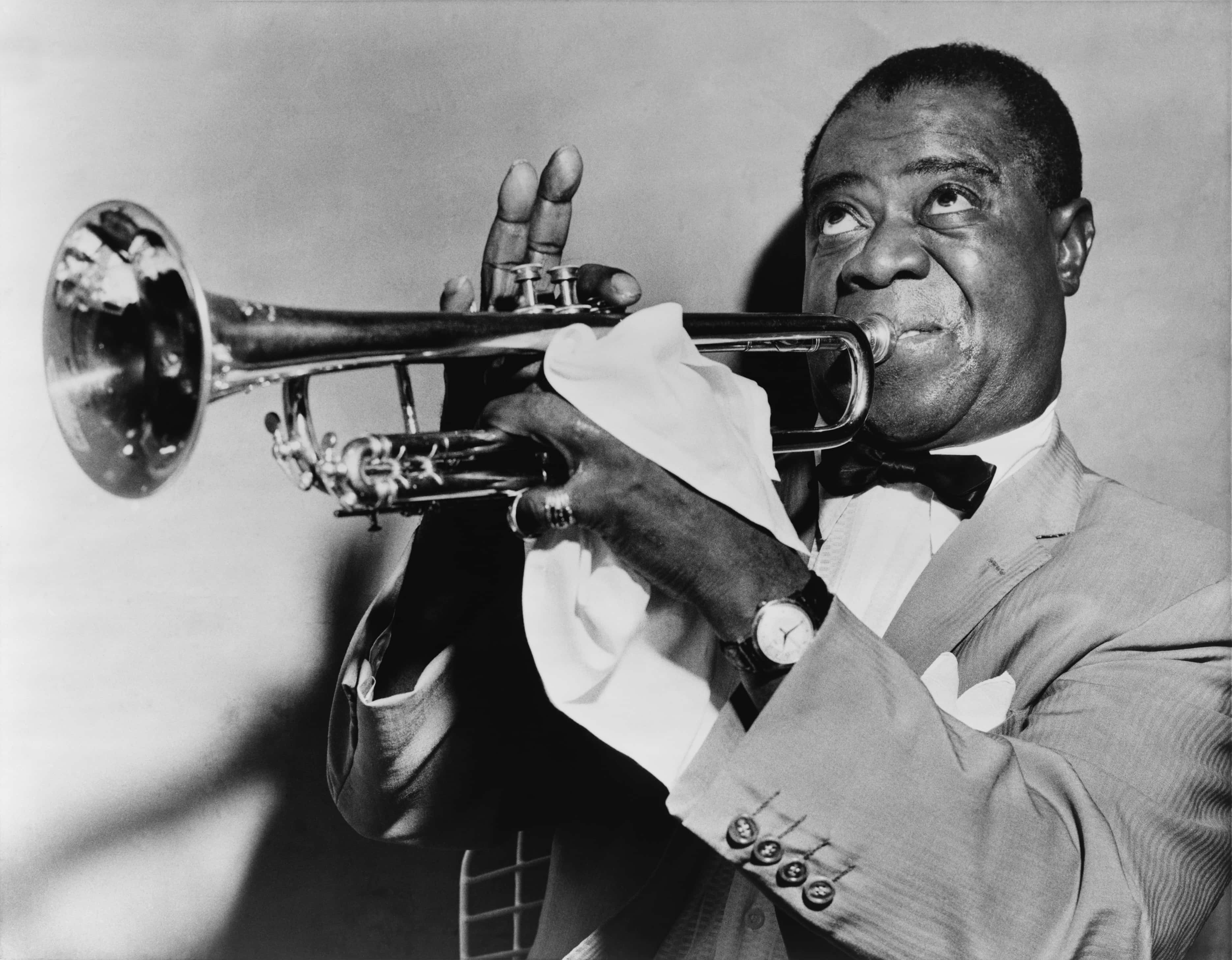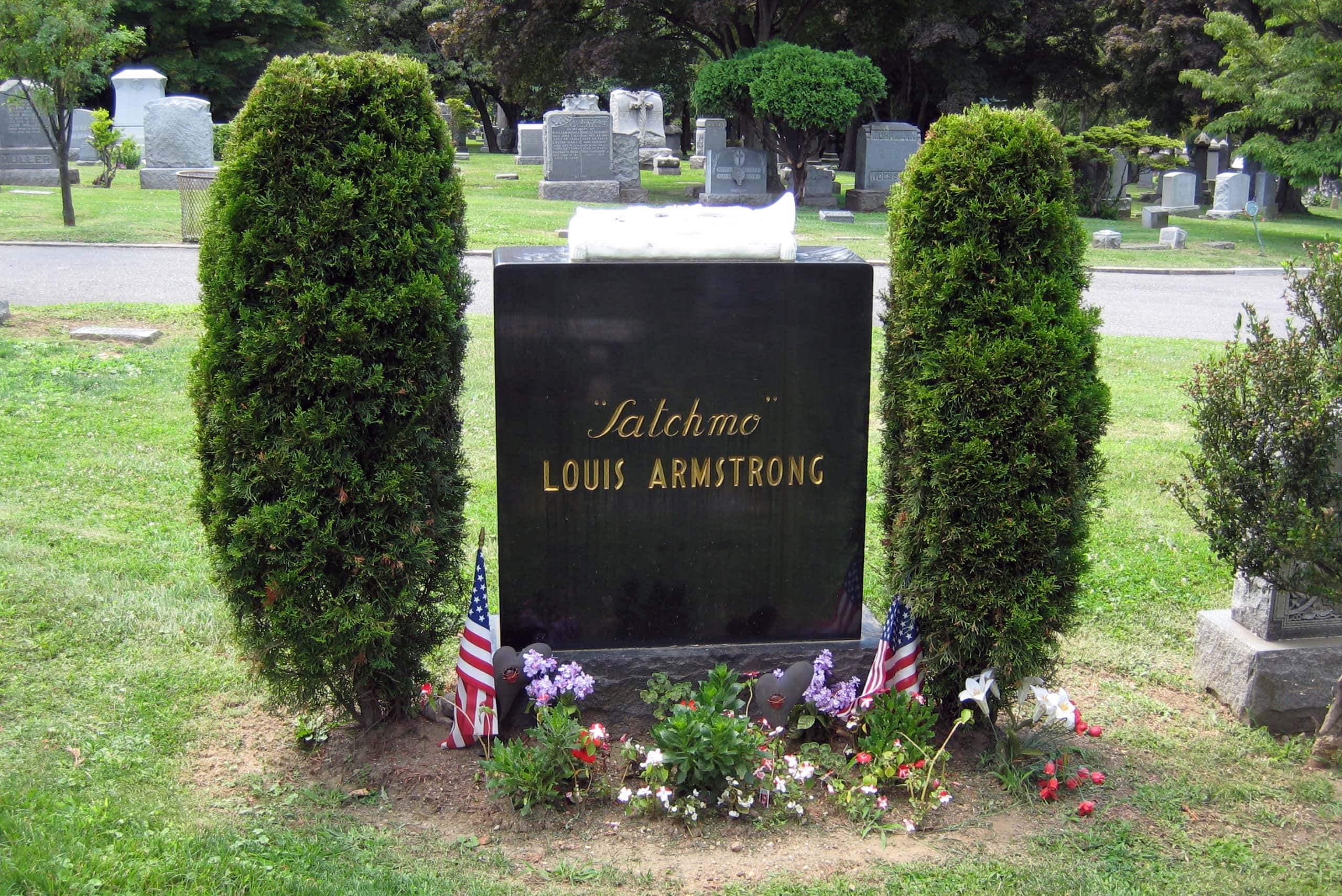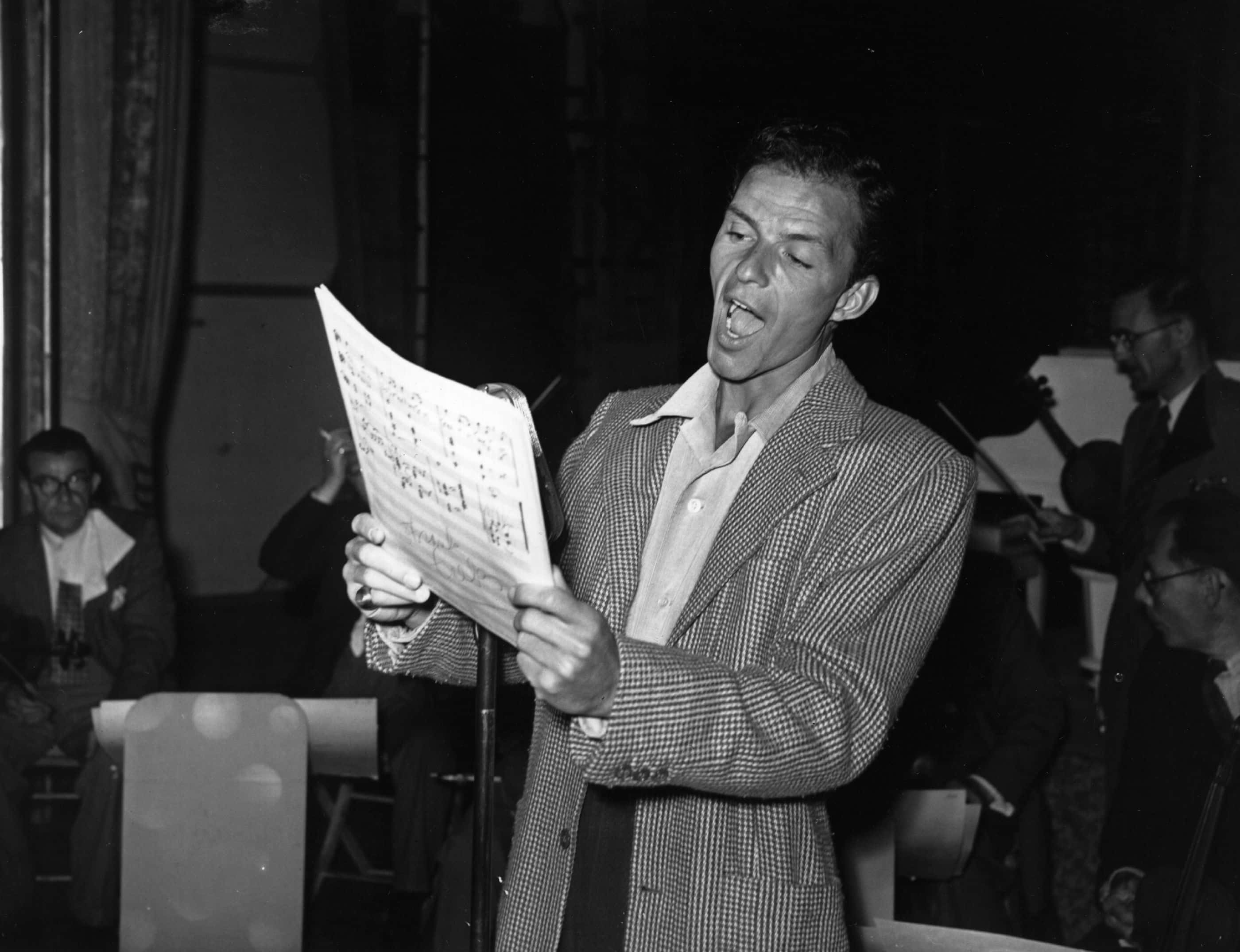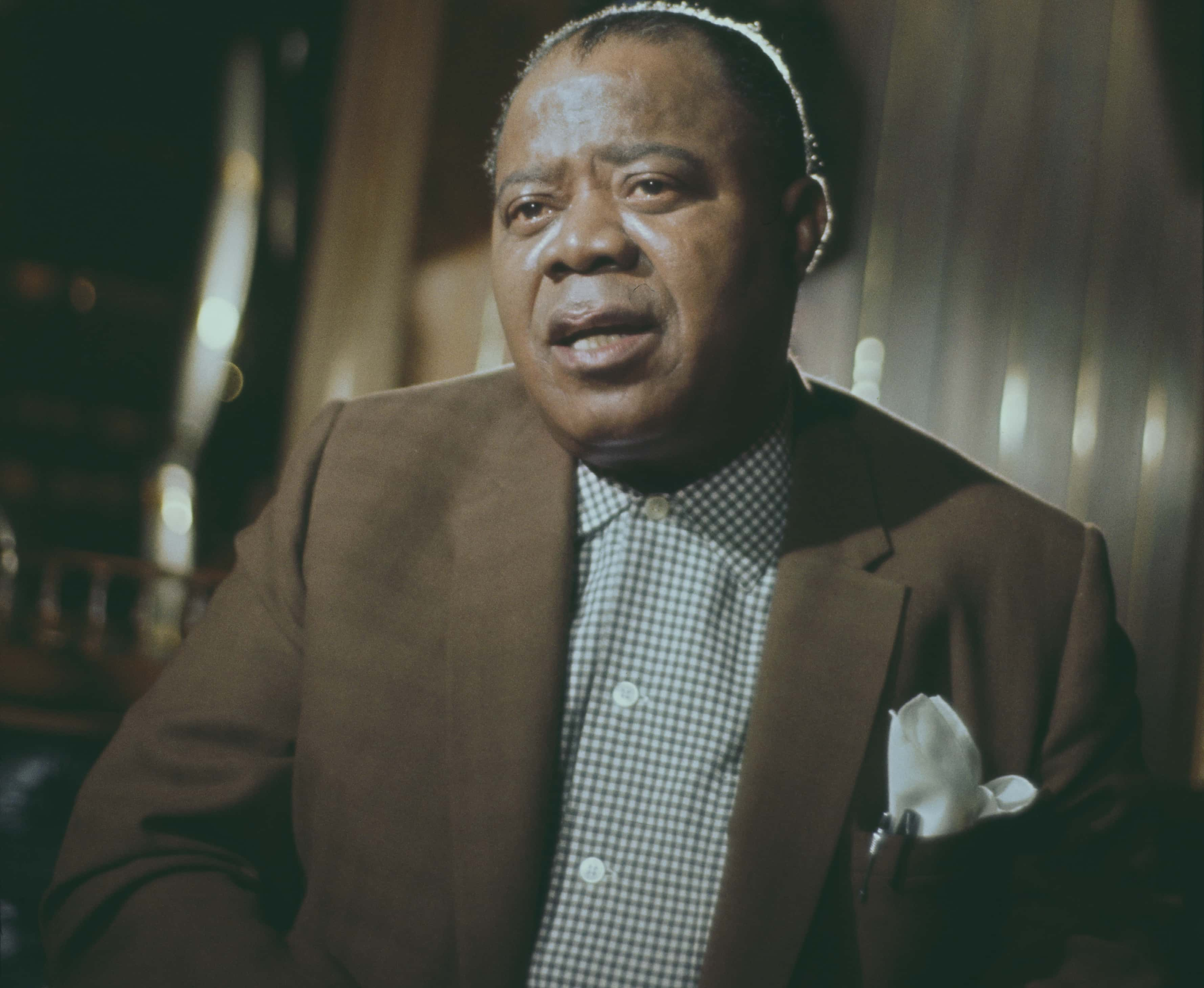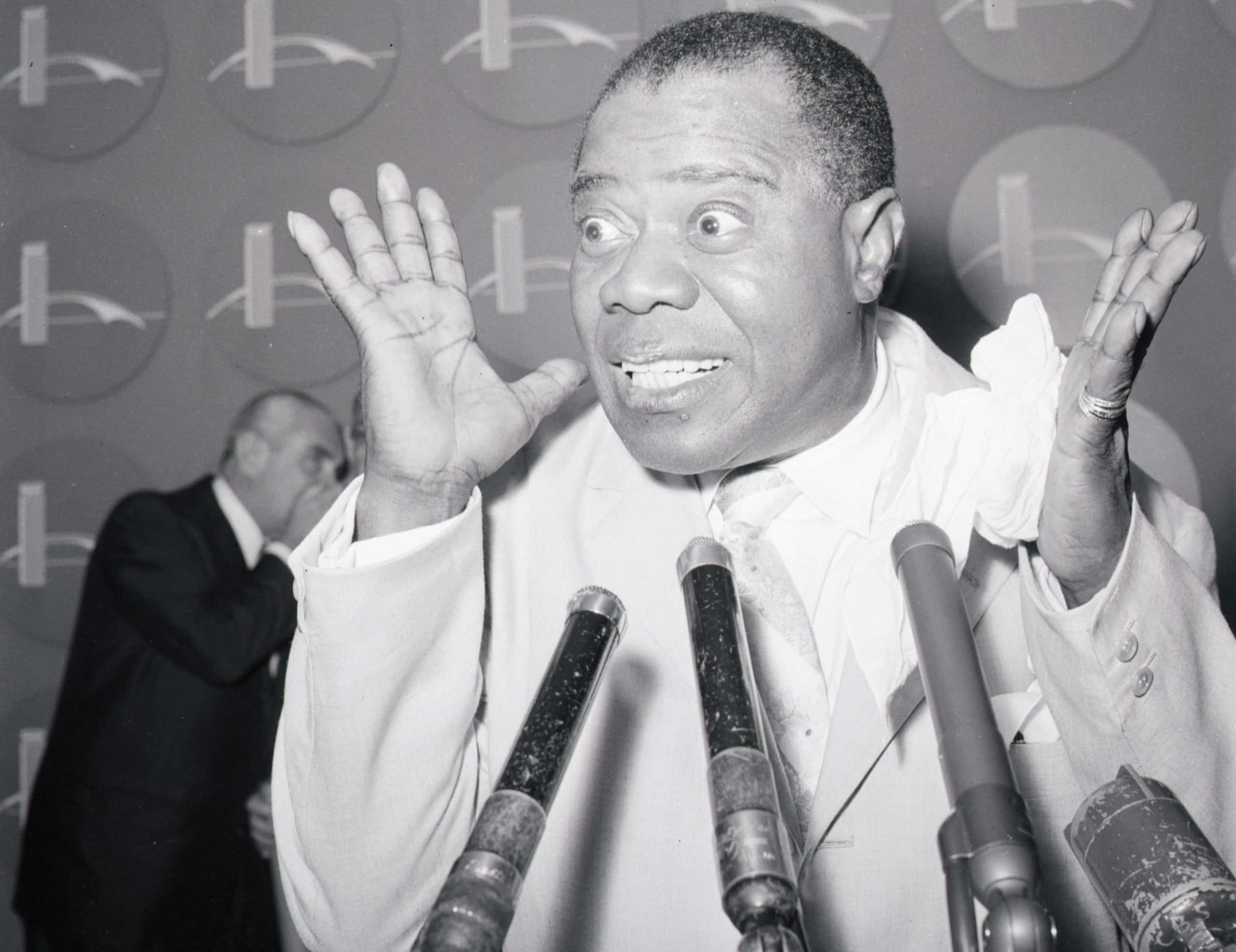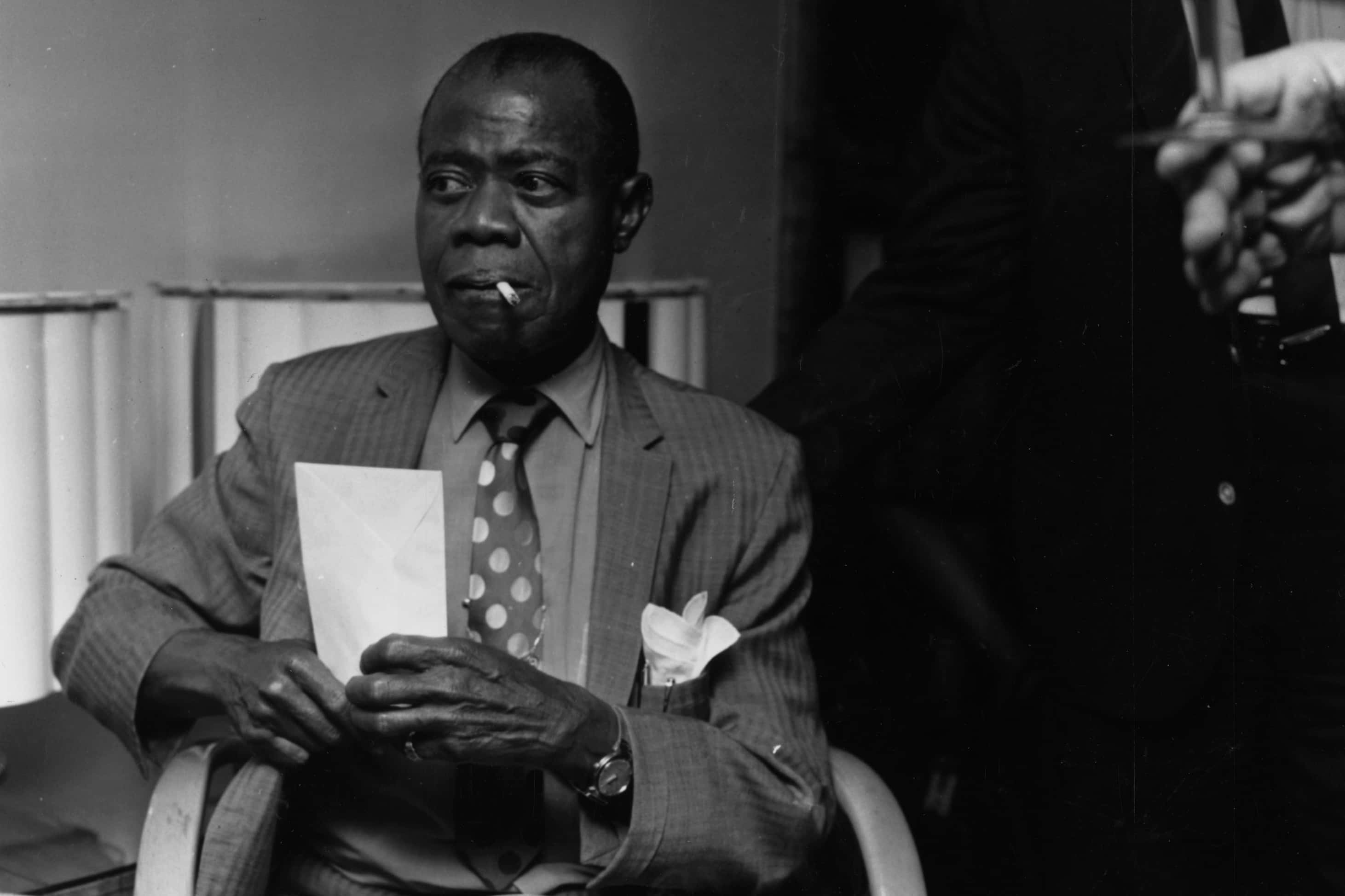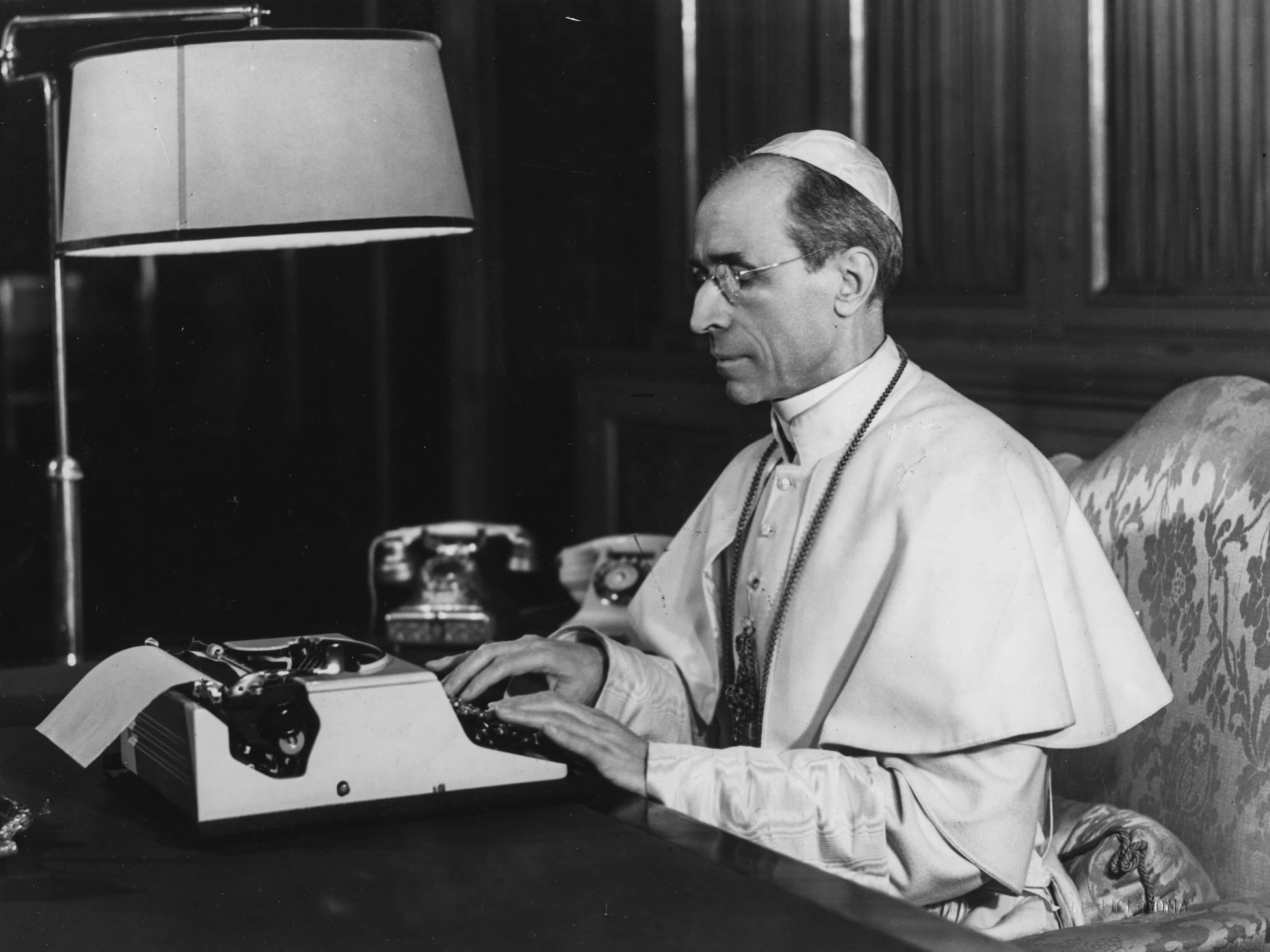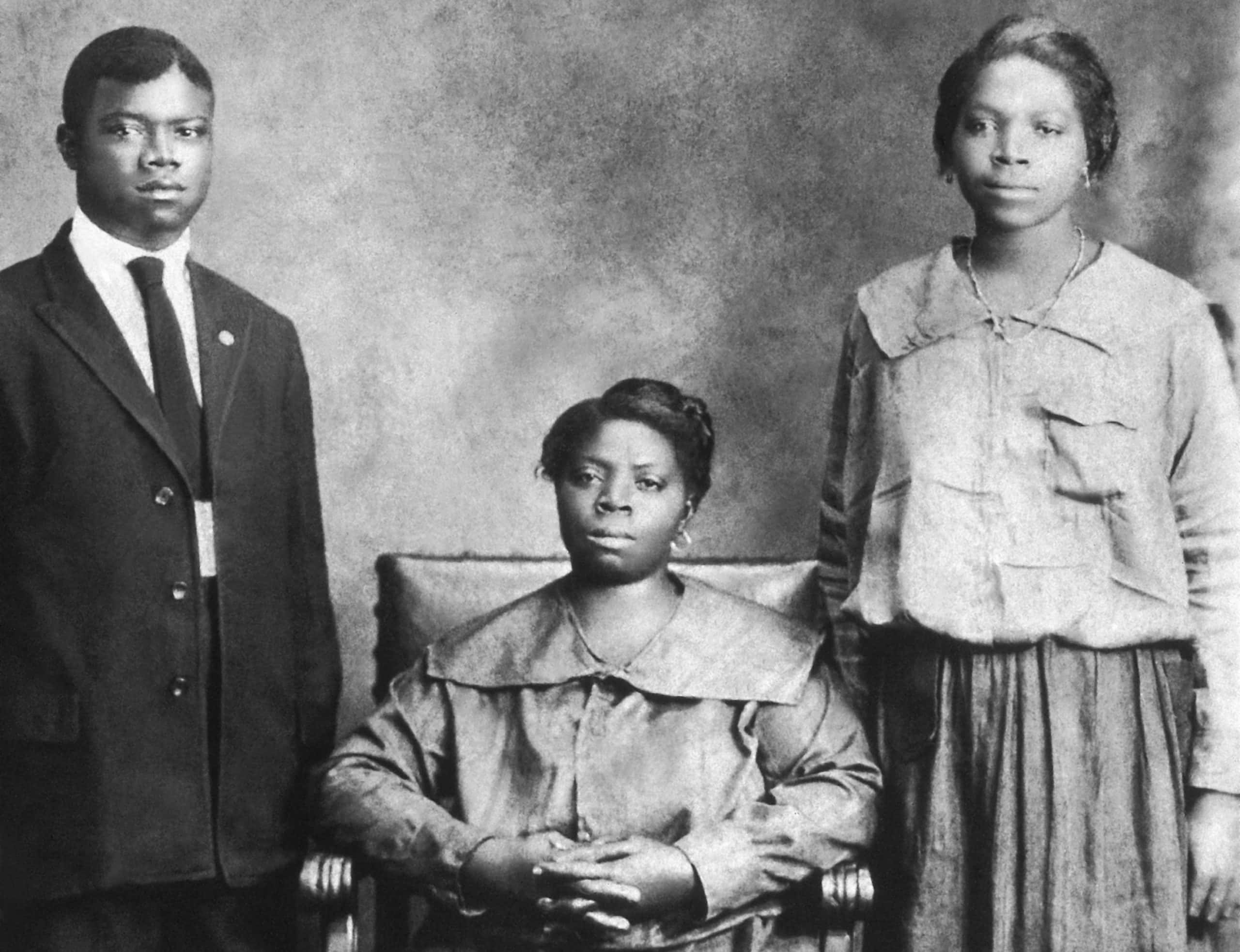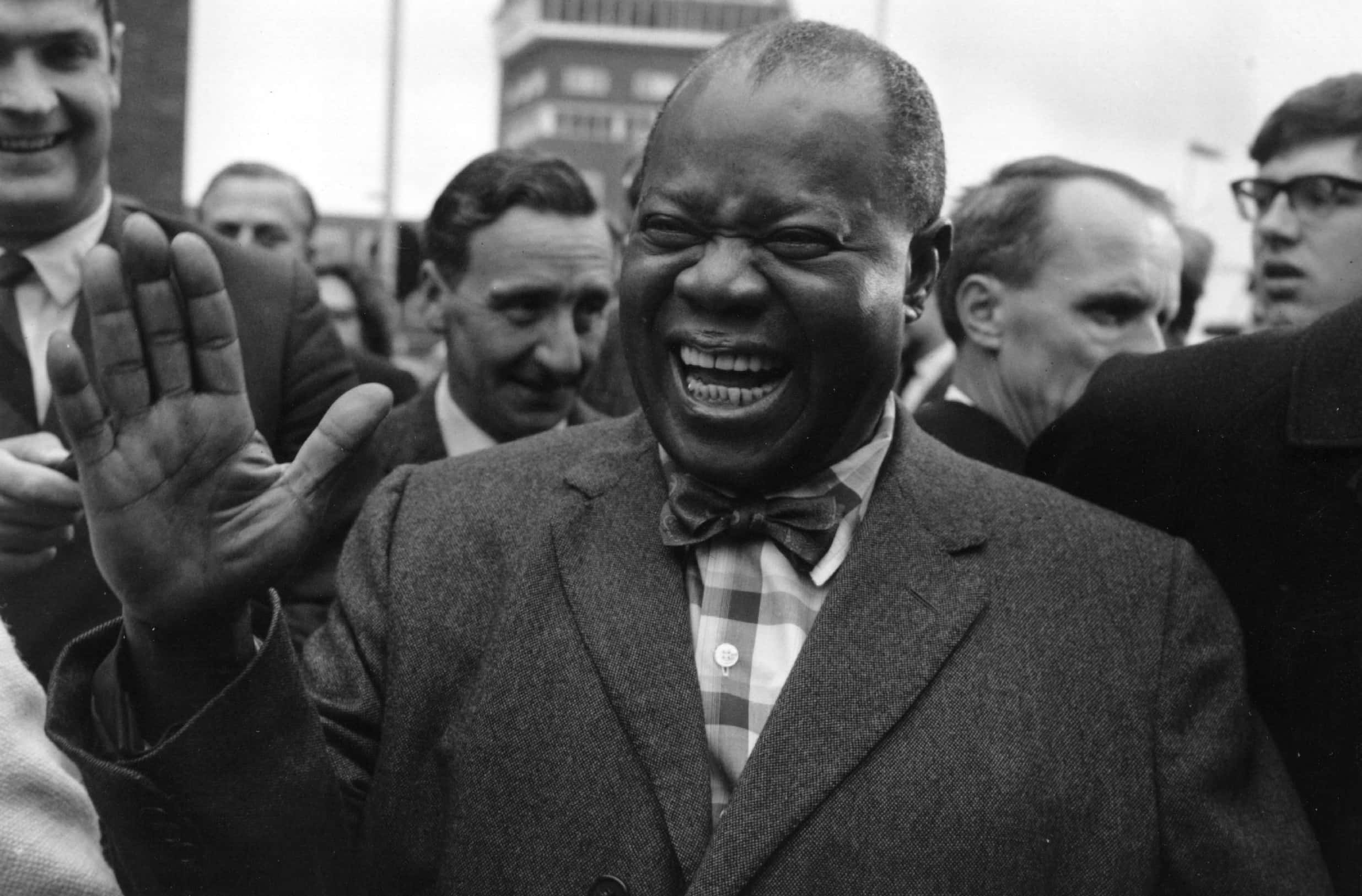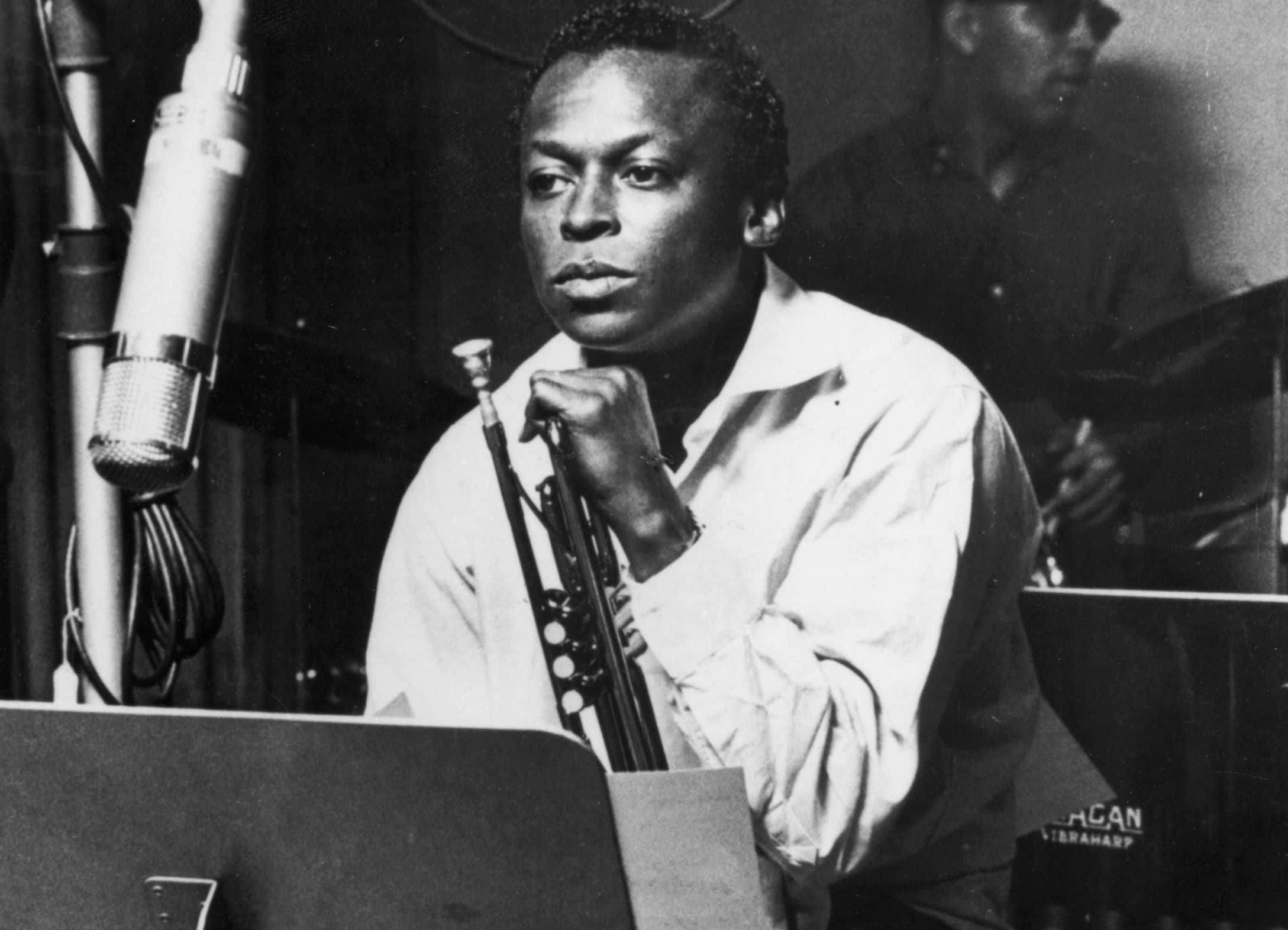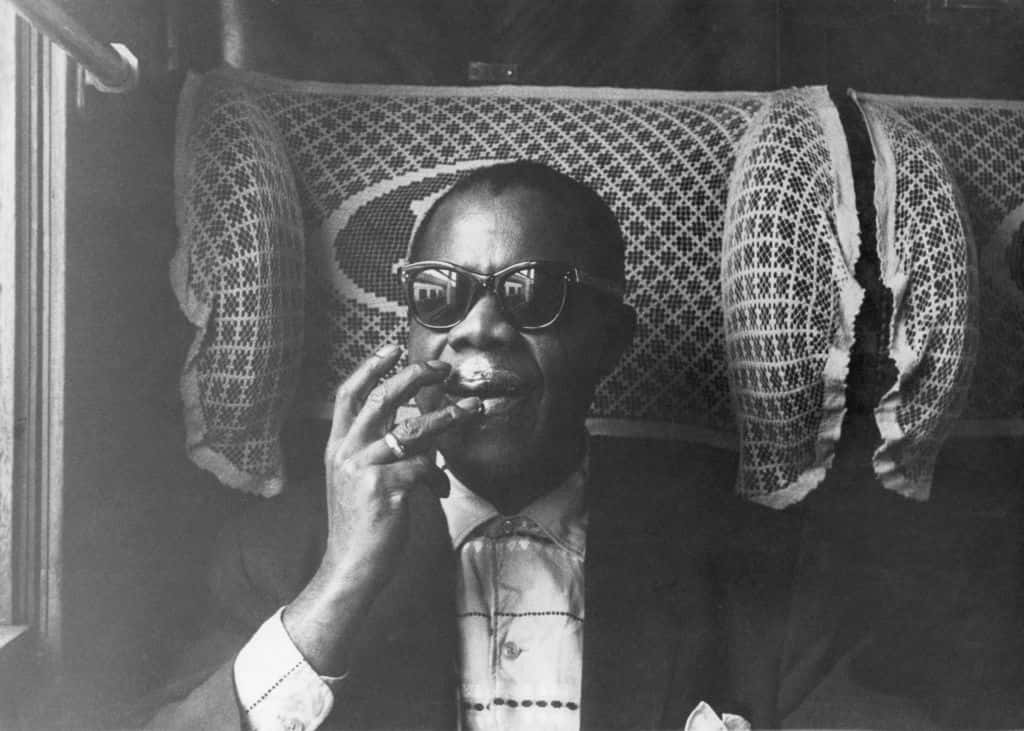People would be hard-pressed to name a jazz musician who was as influential as Louis Armstrong. His long-lasting career and legacy stand as profound examples of Armstrong’s talent. He also defied the rampant racism of his time to become beloved by people of all backgrounds, and he would use his fame to take a monumental stand at the risk of losing his career, or worse. Such a legendary figure fittingly had a fascinating biography filled with interesting facts. We here at Factinate provide a list of them here for you!
Facts About Louis Armstrong
1. A Louie By Any Other Name
Armstrong was given several nicknames throughout his career. Aside from the obvious moniker “Louie,” Armstrong was also known as “Satchmo” and “Pops.”
2. Oh, Those Silly Yanks
Speaking of “Satchmo,” this nickname was actually derived from another nickname that Armstrong got when he was a kid. Armstrong was known for his big smile (an impressive feat, given that he didn’t exactly have the happiest childhood in the world). As a result, Armstrong was called “Dippermouth” and “Satchelmouth.” He kept “Satchelmouth” as a moniker up until the 1930s, when a writer from London altered the nickname to “Satchmo” instead.
3. Ambassador on a Galactic Scale
In 1977, the Voyager 1 and 2 spacecraft were launched into space. Each of them carried a golden record, filled with information on the planet Earth and human society, in case they happened to encounter any alien life on their travels. Chosen by a committee headed by Carl Sagan, the record also includes samples of music to represent humanity’s artistic accomplishments. Alongside tribal music from Congo and Australia, classical music by Beethoven, Bach, and Mozart, and Chuck Berry’s “Johnny B. Goode,” there is also a recording of “Melancholy Blues” by Louis Armstrong and His Hot Seven.
 JPL - NASA
JPL - NASA
4. A Sign of Things to Come
As a child, Armstrong was enrolled at the Fisk School for Boys. While he was at this school, he would also work odd jobs like selling coal. It was during this time that he first heard bands which would play music with household objects rather than instruments. These spasm bands, as they were called, were the beginning of Armstrong’s ventures into the world of music.
5. You’re a Star
As well as being a famous musician and bandleader, Armstrong would appear in Hollywood films, though his range as an actor was rarely tested. He was often cast as thinly veiled versions of himself, though he would immortalize his image by appearing in the film Hello, Dolly! and singing the title song with Barbara Streisand.
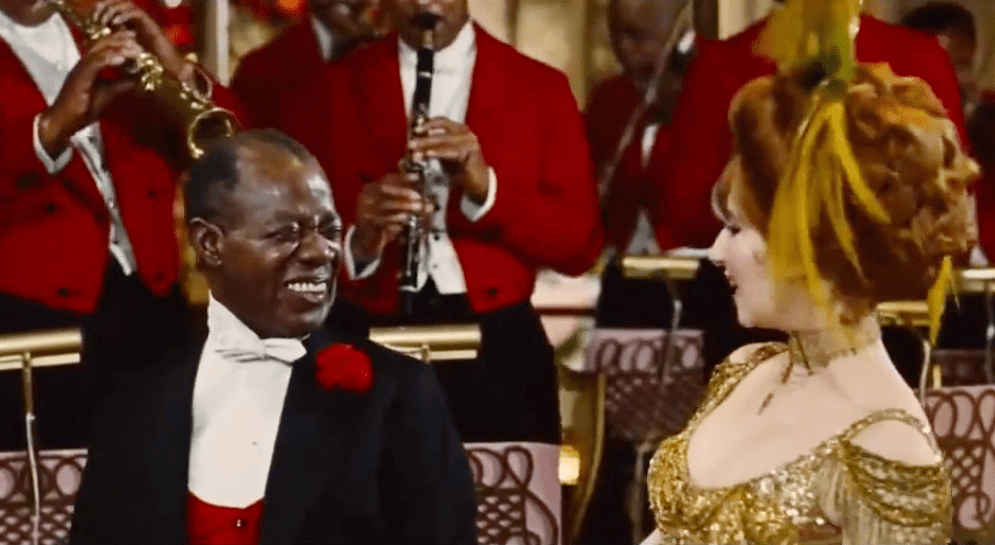 Hello, Dolly! (1969), Twentieth Century Fox
Hello, Dolly! (1969), Twentieth Century Fox
6. You Can Quote Me
Most of you might be familiar, or at least aware, of the jazz term “cat” to describe a cool guy or just a jazz fan in general. You might also know the slang term “chops” to describe someone’s impressive music-playing ability. Though tracking the exact etymology of the terms in near impossible, both of these were allegedly first coined by Armstrong himself—and at the very least, he was certainly to thank for their popularization.
7. Liar Liar
Armstrong was born on August 4, 1901, in New Orleans. However, this wasn’t known commonly until the 1980s. Armstrong had always claimed that he had been born on July 4, 1900, presumably because being born on Independence Day in the first year of the new century seems more poetic.
8. Doobie-doobie-doo!
One thing that people remember Armstrong for was his tendency to scat sing (ie. improvising a series of wordless syllables during a song). While he did not invent the technique by any means, it was Armstrong who first brought it into the mainstream. This popularization of scat singing first began in 1926 with Armstrong’s song “Heebie Jeebies.” It remains debatable whether Armstrong intended to scat sing during that song from the start or whether it was (as Armstrong claimed) an accident and improvisation on the spot. Either way, its influence can’t be understated.
 Wikimedia Commons, Herbert Behrens / Anefo
Wikimedia Commons, Herbert Behrens / Anefo
9. Sworn Brother
Contrary to popular belief, Armstrong was not actually a Freemason; the lodge with which he is associated (Montgomery Lodge No. 18) has never existed. However, Armstrong did belong to a fraternal organization known as the Knights of Pythias, which also named three US presidents as members (Mckinley, Harding, and FDR)

History's most fascinating stories and darkest secrets, delivered to your inbox daily.
10. You’ll Go Far
At the age of 11, Armstrong was living with his mother and had already dropped out of school. However, he got his first taste of the music industry by joining a quartet of boys who sang in the street for money. We can only imagine what some of those passersby must have thought if they'd known that one of those boys would go on to be one of the biggest names in American music!
11. Rehearsing on the Fly
Armstrong’s real education occurred when he was playing with a brass band on riverboats in the south. His bandleader, Fate Marable, pushed for everyone in his band, including Armstrong, to be able to read and perform a piece of music even if they hadn’t ever seen it before. This crash course in sight reading, as it's called, proved very useful for Armstrong later in his career.
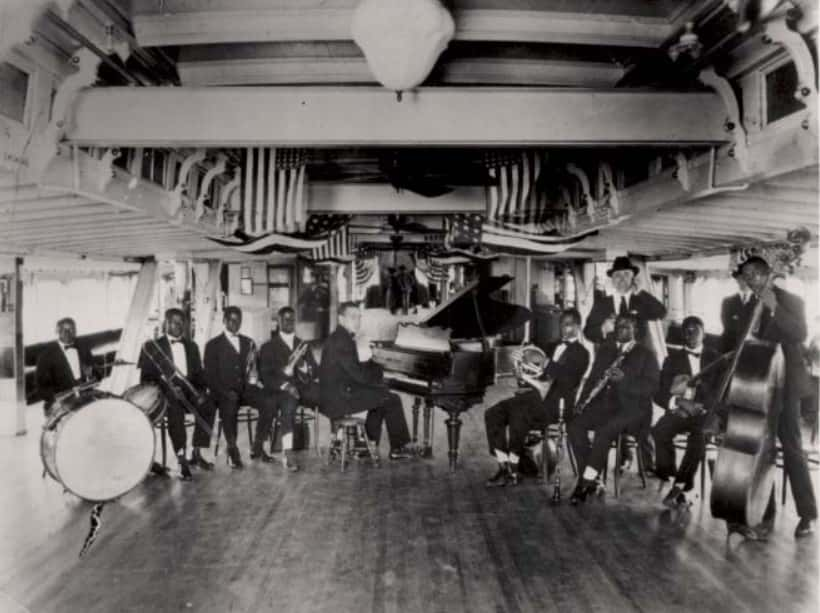 Wikimedia Commons
Wikimedia Commons
12. Let the Royalties Flow!
Not only was Armstrong talented at playing music or singing, he was also a composer and songwriter. More than fifty songs were penned by him during his lifetime, many them becoming jazz standards that are frequently covered and re-recorded to this day.
13. Mazel Tov
When Armstrong was a child, he would work jobs for the Karnoffskys, a Jewish family who were originally from Lithuania. The Karnoffsky family would not only take him in and ensure he was well-fed, but they were also the ones who gave Armstrong the money to buy his first cornet. Even as a child, Armstrong could see that the Karnoffskys, like himself, were subject to racism and prejudice; in this case, it was for their Jewish faith. In honor of their kindness towards him as a child, Armstrong would proudly wear a Star of David pendant for the rest of his life.
14. The Avengers of Jazz
In 1956, Armstrong was involved in what became one of the classic albums of 1950s jazz. He teamed up with Ella Fitzgerald (known as the Queen of Jazz) and a number of instrumentalists, including Canadian legend Oscar Peterson on piano and Buddy Rich on the drums. Ella and Louis was such a success that it inspired a sequel album, Ella and Louis Again, in 1957.
15. Listen to Me Go!
Armstrong was what you might call an audiophile. He collected all kinds of music recordings throughout his life and would even take a number of them with him whenever he went on tour. It wasn’t just because he loved music, however; Armstrong also used the recordings, including those of himself, to improve his own sound and performances. This might seem like a basic bit of practice today, but Armstrong was actually one of the first musicians to do this.
16. Let Louie Play!
In New Orleans, Congo Square has always served as a common gathering place for singing and dancing. The park that contains the square has been named Louis Armstrong Park in honor of the great jazz player. A statue of him has also been erected in the park, presumably for those two or three people who might not know who he is.
17. We are Most Amused
In 1932, Armstrong was invited to play for King George V at Buckingham Palace. As successful as the royal performance was, however, the highlight of the evening supposedly came from an improvised nickname that Armstrong gave George V during the show. Looking directly at the attending monarch, Armstrong boomed “This one’s for you, Rex!” While this was a serious breach of etiquette (you couldn’t refer to the royal family while playing for them), nobody cared. In fact, the audience roared with laughter, even as Armstrong broke into “You Rascal, You.”
18. When You Wish Upon a Star…
On February 8, 1960, Armstrong received his well-deserved Star on the Hollywood Walk of Fame. It can be found at 7018 Hollywood Boulevard in case you want to go see it.
19. Insert Food Pun Here
Armstrong was always a fan of the culinary arts, and this attitude was reflected in his music (several of his songs were food-themed) and also his interactions with people. He was well known to conclude any letters he wrote with “Red beans and ricely yours.”
20. Money Where Your Mouth Is
Like many other trumpet players, Armstrong strained his lips severely over the course of his career. The strain of the instrument on his lips, coupled with the mouth action required to actually play the trumpet well, resulted in ulcerations during his 1930s tour of Europe. It was so severe, in fact, that he had to stop playing the trumpet for a year. He would become so reliant on creams and salves that he actually offered his services to Ansatz-Crème Lip Salve to be their spokesman.
21. As Good as Gold
In 1964, Armstrong made history by being the oldest artist to have a number one hit single in the United States. He was 63 when his song “Hello Dolly” outsold even the Beatles—and this was at the height of Beatlemania!
22. Fourth Time’s the Charm?
Armstrong was married four times in his life. None of his first three marriages lasted longer than ten years, though his fourth marriage, to Lucille Wilson in 1942, lasted until his death in 1971.
23. The People You Know
In the 1930s, Armstrong made a living by playing music at the New Cotton Club in Los Angeles. This meant that he was performing for many of the elite Hollywood crowd, which included famous singer Bing Crosby. Crosby himself was deeply inspired by Armstrong’s music, and the two of them would work together throughout their careers. Armstrong even appeared in Crosby’s 1936 film Pennies from Heaven.
24. Louie Would Be Proud
One of the many musicians who was inspired by Armstrong was American musician Scatman John, who you might remember for his 1995 hit “Scatman (Ski-Ba-Bop-Ba-Dop-Bop).” In 1997, John made another hit song called “Everybody Jam!” which was a unique tribute to Armstrong and his hometown of New Orleans. The song was composed as though it was a duet between John and Armstrong. This was achieved by incorporating archive audio of Armstrong, as well as an actor who stood in for the legendary jazz player in the music video. Speaking of that video, we dare you to find a music video that’s more upbeat and positive than “Everybody Jam!”
25. Thanks, Tony!
The 1967 song “What a Wonderful World” is arguably Armstrong’s most enduring pop cultural contribution, with its beautiful sentiments and signature vocals. However, it was only offered to Armstrong when famous crooner Tony Bennett had turned it down.
26. Late Bloomer
Despite the success of Armstrong’s “What a Wonderful World” in the UK when it was first released in 1967, it was initially a failure in the United States. The song didn’t catch on in the US until 1987, when the Barry Levinson film Good Morning, Vietnam used “What a Wonderful World” as part of the soundtrack.
27. Love is in the Air
When Armstrong was just sixteen years old, he performed regularly at the Brick House in Gretna, Louisiana. While there, he began visiting a prostitute named Daisy Parker, but his feelings for her grew beyond their business relationship. Despite the fact that Walker had a common-law husband, she and Armstrong were married on March 19, 1918.
28. Adoptive Father
Shortly after Armstrong was married to his first wife, they adopted the three-year-old son of Armstrong’s cousin after she tragically passed away. The boy, Clarence, had suffered a serious head injury which left him disabled. While Armstrong’s marriage to Daisy Parker ended in 1923, he would continue looking after Clarence for the rest of his life.
29. I See Trees of Green…
Believe it or not, Armstrong was a huge fan of marijuana. He would smoke it throughout his life and even spent nine days in prison after being caught smoking it outside a club in 1930.
30. Get Your Act Together!
In 1956, there was a ban placed on integrated music groups in Louisiana, Armstrong’s home state. Armstrong was appalled, especially since he felt jazz had been born there, and he remembered “when it was no crime for cats of any color to get together and blow.” Armstrong refused to perform in Louisiana until the ban was lifted in 1965.
31. How Does He Do It?
Armstrong was a voracious performer. From the 1940s to the 1970s, he was known to play more than 300 performances per year! Even as he got older and his health started deteriorating, you simply couldn't keep this man off the stage.
32. “Music is my Life”
Armstrong was a consummate music performer—to such an extent that he refused to stop, even in his dotage. In 1971, his doctors warned him that he should take time off from performing, but Armstrong wouldn’t hear of it. A two-week engagement at the Waldorf-Astoria in New York resulted in him suffering a heart attack. Even that wouldn’t stop him, however, and he continued to practice his trumpet, planning to get back on his feet and resume playing. Sadly, a second heart attack killed him in his sleep on July 6, 1971.
33. Farewell to a Legend
Armstrong was buried in Flushing Cemetery in New York City. Many of his renowned music peers (Bing Crosby, Ella Fitzgerald, Count Basie, Frank Sinatra, and Dizzy Gillespie) served as honorary pallbearers at his funeral, while his eulogy was read out by his lifelong friend Fred Robbins.
34. And Then Let’s Cast Walken Decades Later!
Disney fans might remember the scat-singing orangutan known as King Louie in the 1960s film The Jungle Book—but most people don't realize that King Louie wasn’t a character from Rudyard Kipling's original story. He was created specifically for the Disney film, inspired by none other than Louis Armstrong. While the character's name and singing style make the connection clear, Armstrong was actually considered for the voice role as well. However, the implications of a black man voicing an ape would have made for serious (and justified) accusations of racism, especially given that time period. To avoid such a controversy, Disney cast a white scat singer, Louis Prima, instead.
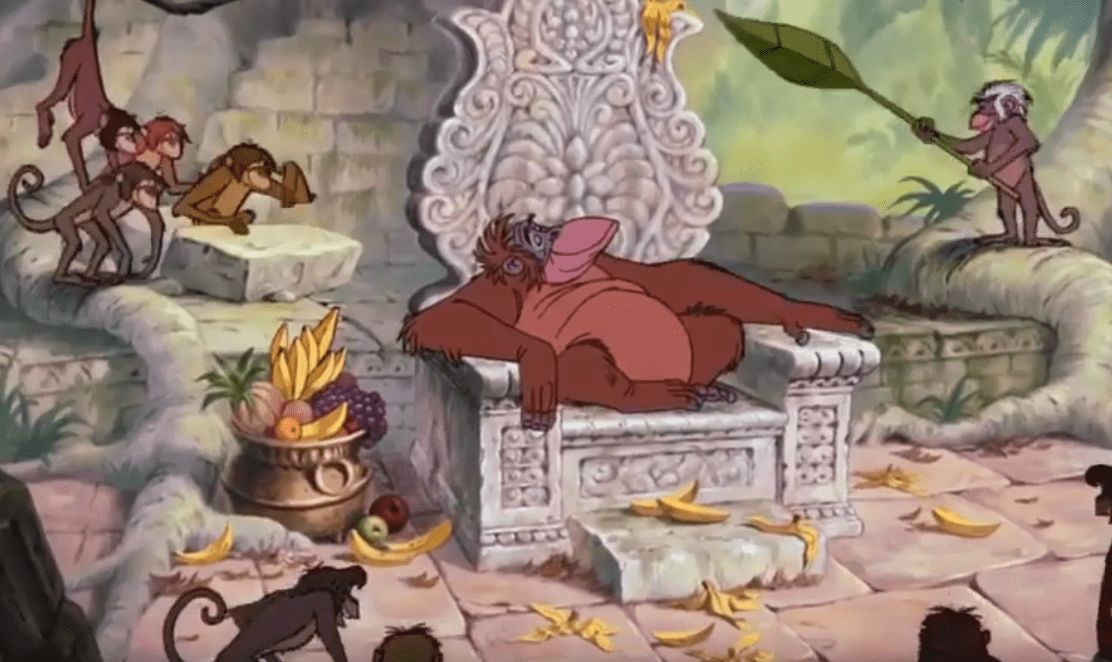 The Jungle Book, Walt Disney Productions
The Jungle Book, Walt Disney Productions
35. You’ve Gone Too Far!
For many years, despite his incredible popularity, Armstrong would stay quiet regarding race issues in his home country, which was very disappointing to civil rights activists. This changed in 1957, when nine black students were prevented from going to Little Rock High School by the Arkansas National Guard, supported by crowds of segregationists. Outraged by President Dwight Eisenhower’s inaction, Armstrong broke his silence when he declared that the “president has no guts” and that “the government can go to hell!”
36. I’m Not Having This!
As well as openly criticizing the government for its lack of support in desegregating the American school systems, Armstrong also refused to go on a tour of the Soviet Union in 1959. In case you’re confused as to what the Soviet Union had anything to do with the racism behind segregation, the tour itself was being sponsored by the US government, with Armstrong acting as an unofficial ambassador. However, Armstrong refused to represent Eisenhower abroad when he would have been viewed as lesser because of his skin color in his own country.
37. Armstrong and Affirmative Action
The aging Armstrong would become a fervent supporter of the Civil Rights Movement in the 1960s. He made his support clear in 1965, after peaceful protesters marching Selma, Alabama were attacked by brutal police tactics. As Armstrong later stated, “They would beat Jesus if he was black and marched. Maybe I'm not in the front line, but I support them with my donations.”
38. Holy Pops
Such was Armstrong’s fame that he and his wife got to have a sit-down with Pope Pius XII in 1949. According to Armstrong, the “fine little ol’ fella” asked the Armstrongs if they were blessed with children. Armstrong allegedly quipped, “No, daddy, but we’re workin’ on it!” We like to think that the Pope at least cracked a grin at that kind of response.
39. Fractured Family
Armstrong’s parents were William Armstrong and Mary Albert. Shortly after Armstrong’s birth, however, William abandoned the family. Mary was just sixteen years old when Armstrong was born, and so he was raised by his grandmother for the first five years of his life.
40. “Leave it all Behind Ya!”
Despite his enthusiasm for food, Armstrong was also very concerned about his weight, and it led him to seek out an unusual method for controlling his health. Armstrong would rely so heavily on laxatives that he would advocate for them to his friends, and he even wrote a diet book encouraging their use. He would also give out laxatives as casual gifts, even to members of the British Royal Family when he met them on one of his tours.
41. Young Whippersnappers…
Despite his widespread popularity in the 1950s, Armstrong was at odds with the new generation of jazz which included Miles Davis and Charlie Parker. They disliked his older style as being “a link to minstrelsy.” For his part, Armstrong had nothing but contempt for the bebop music which took prominence in that decade. He was once asked if he could play bebop, and he promptly responded, “I just play music.” Ouch.
42. An Offer You Can’t Skabba dabba dooba Refuse!
Despite his glowing reputation, Armstrong wasn’t without his troubles. His stances on racial integration (more on those later) resulted in the FBI creating a file on him. Long before that, however, he started getting followed by the people on the other side of the law: the Mafia. In fact, their presence eventually got so unsettling that Armstrong fled the country for a time.

